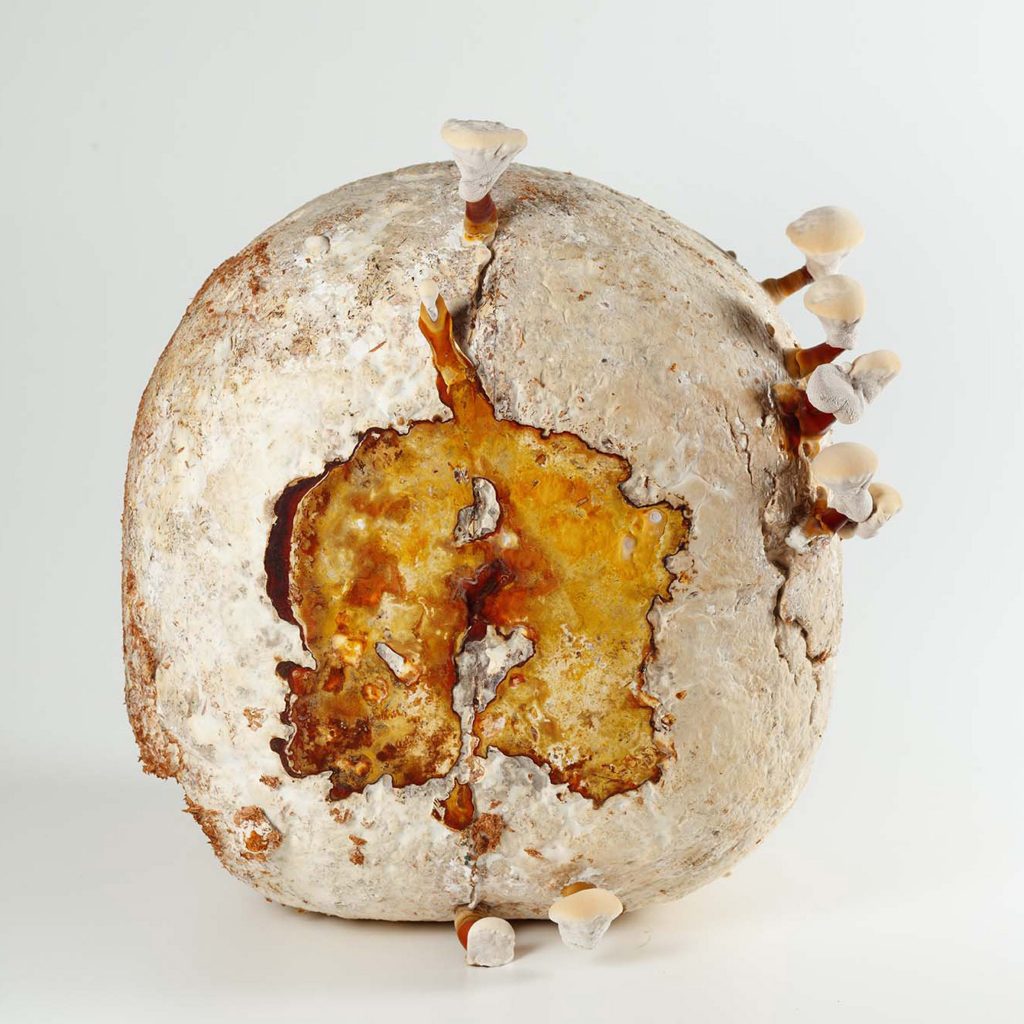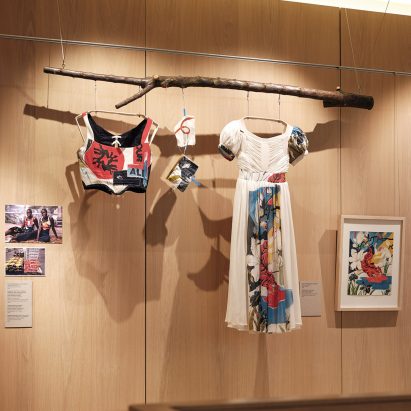
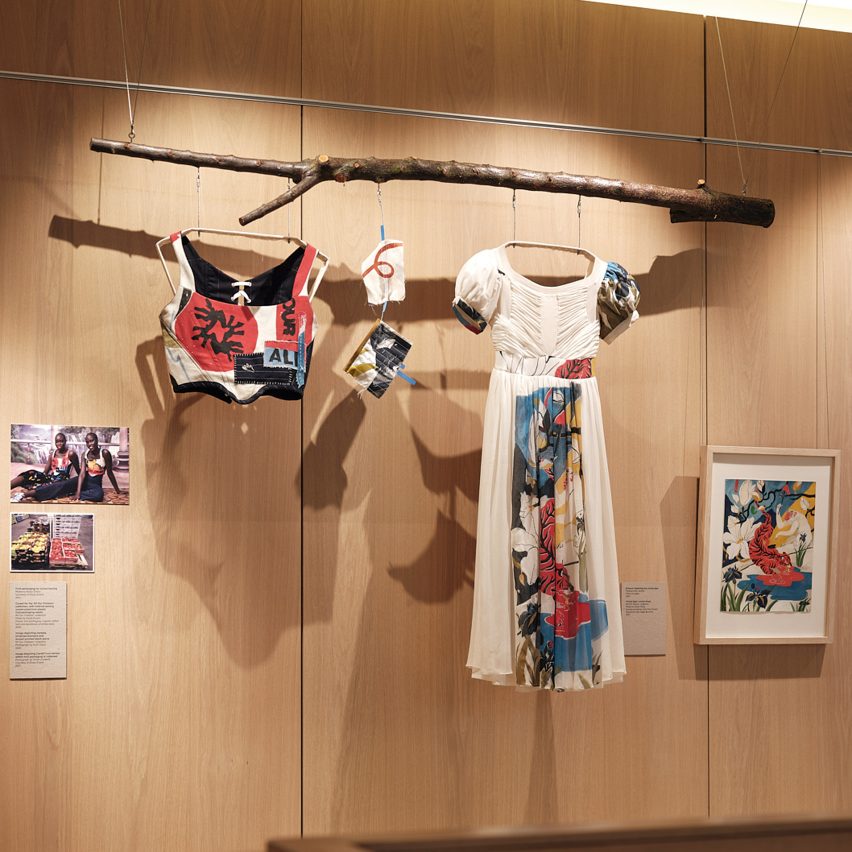
An exhibition highlighting London-based designer Bethany Williams' waste-combating, social-driven vision for the fashion industry has opened at the Design Museum.
Exhibited in the atrium of London's Design Museum, Bethany Williams: Alternative Systems is a celebration of Williams' work which explores and responds to social issues through the use of community-led enrichment initiatives.
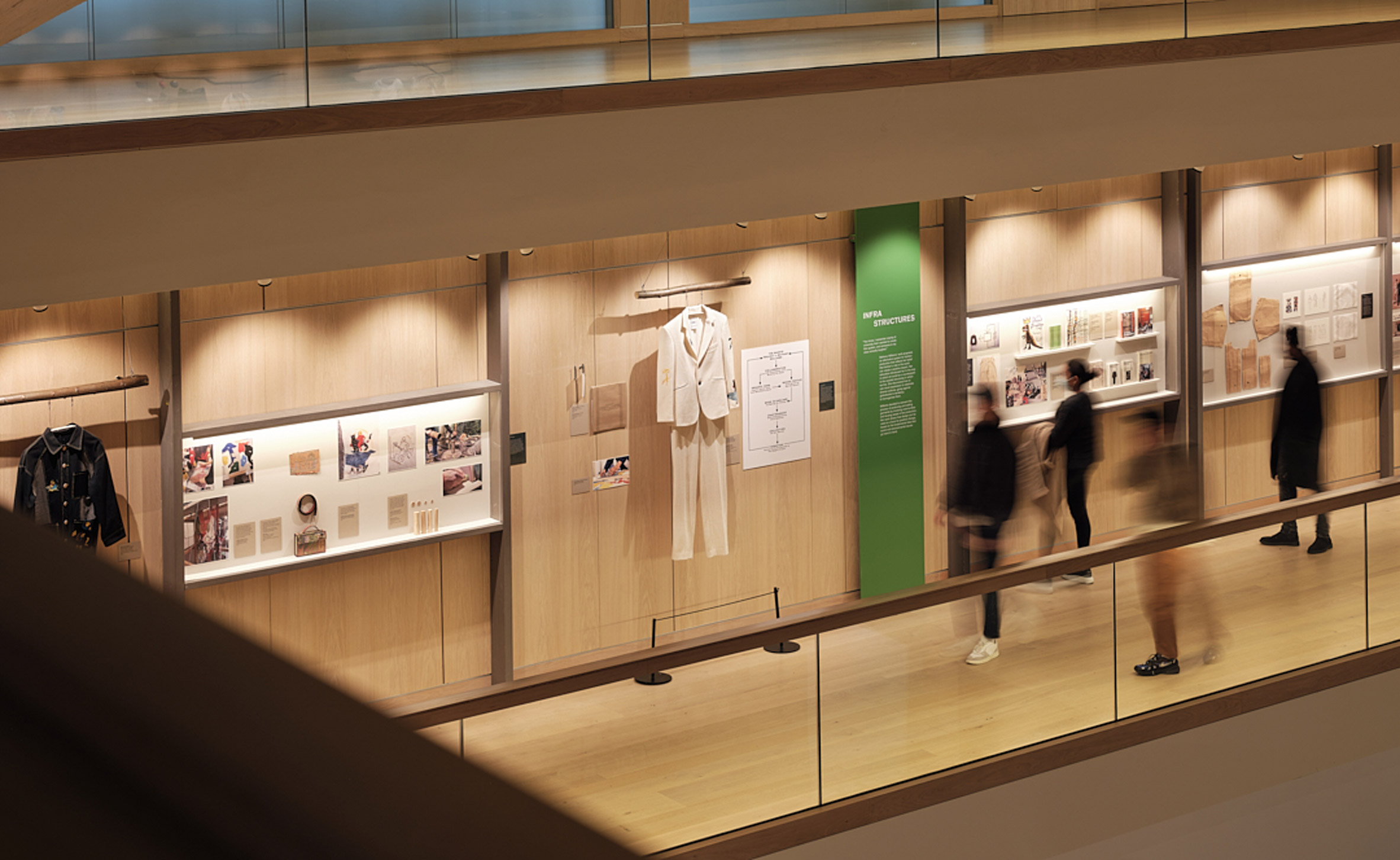 Bethany Williams: Alternative Systems is a free display in the atrium of the Design Museum
Bethany Williams: Alternative Systems is a free display in the atrium of the Design Museum
A number of key works by the designer were exhibited across the four walls of the atrium's balcony gallery, which is free to entry.
Mannequins are displayed among textiles samples, photography and raw waste materials in efforts to highlight the studio's commitment to sustainable fashion.
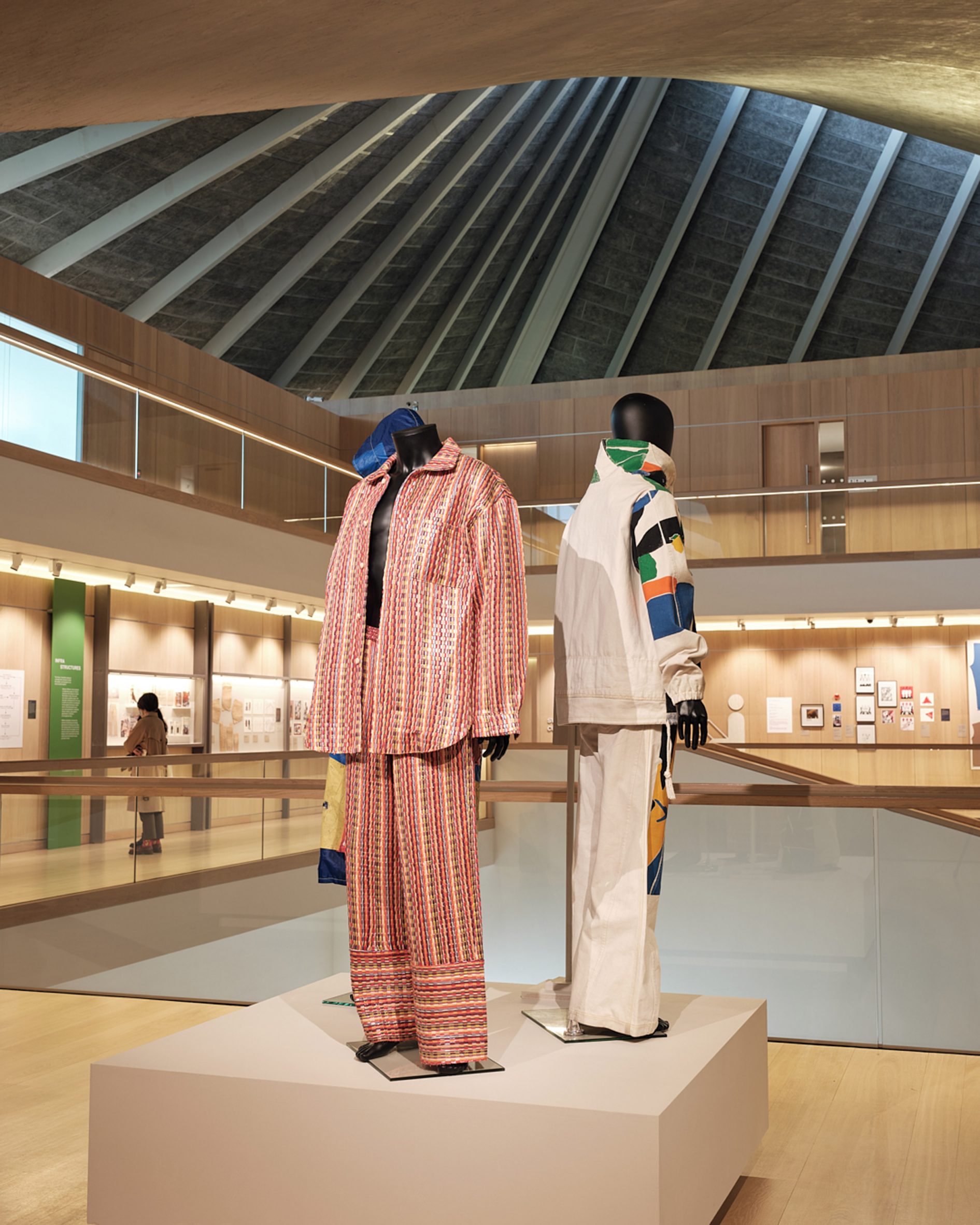 The display was chosen to be shown in a free entry space in the museum
The display was chosen to be shown in a free entry space in the museum
"I decided to organise the display thematically rather than by collection," said Design Museum's head of curatorial and interpretation Priya Khanchandani.
"It opens with a section about the studio specifically and then there's a part about creative process, intellectual references and the way in which they propose alternative infrastructures of working, followed by a section about reuse and another about community collaborations," she told Dezeen.
"Bethany's work not only tackles the question of the environmental impact of design, but it also has an amazing social purpose."
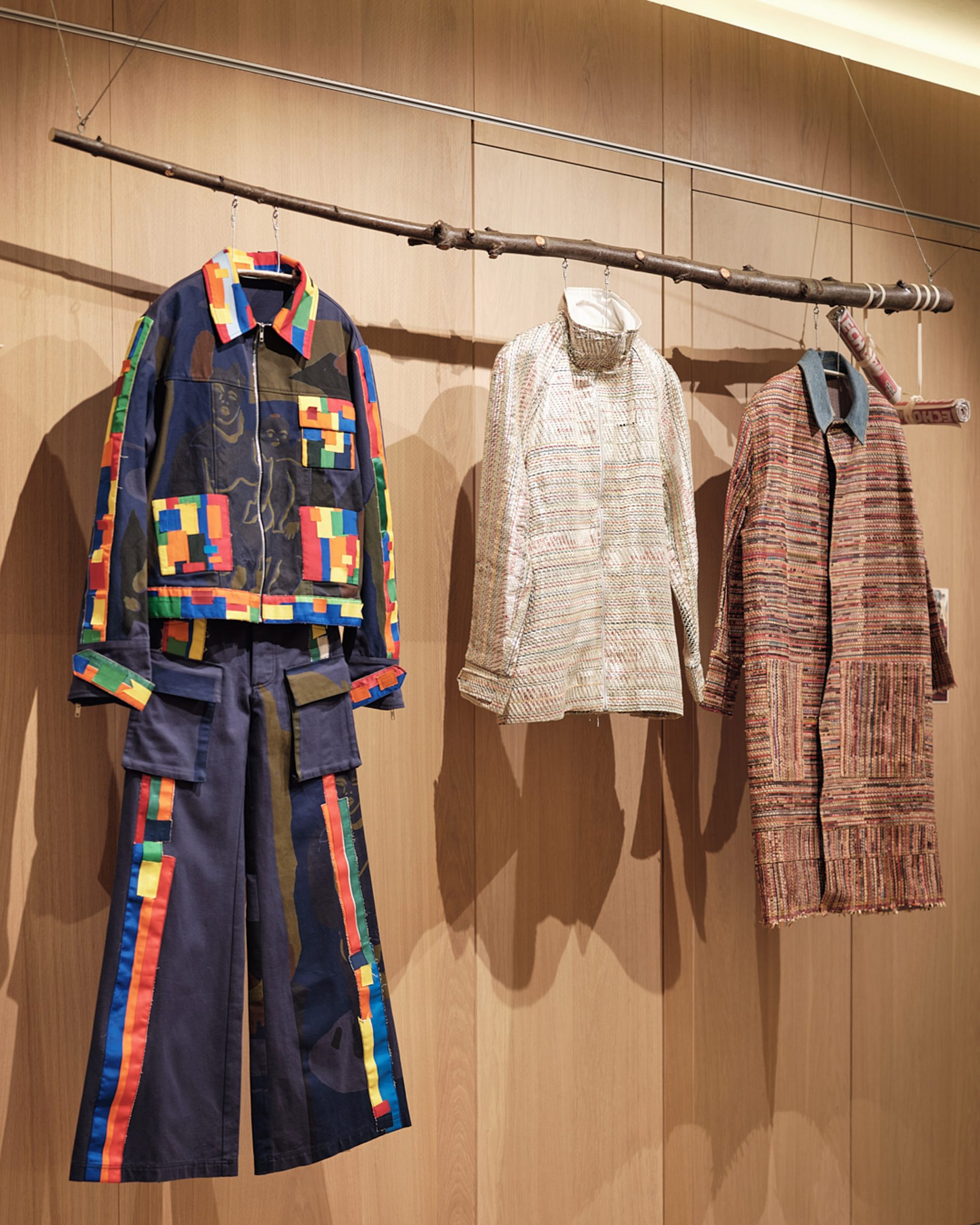 The exhibition design was completed by Edit
The exhibition design was completed by Edit
Williams is a fashion designer, humanitarian and artist. She graduated from Brighton University with a degree in Critical Fine Art before receiving a master's from the London College of Fashion in Menswear.
She launched her namesake brand in 2017 and has strived to spotlight and respond to social and environmental issues, her works see her partnering with local grassroots programs and manufacturing collections using waste materials.
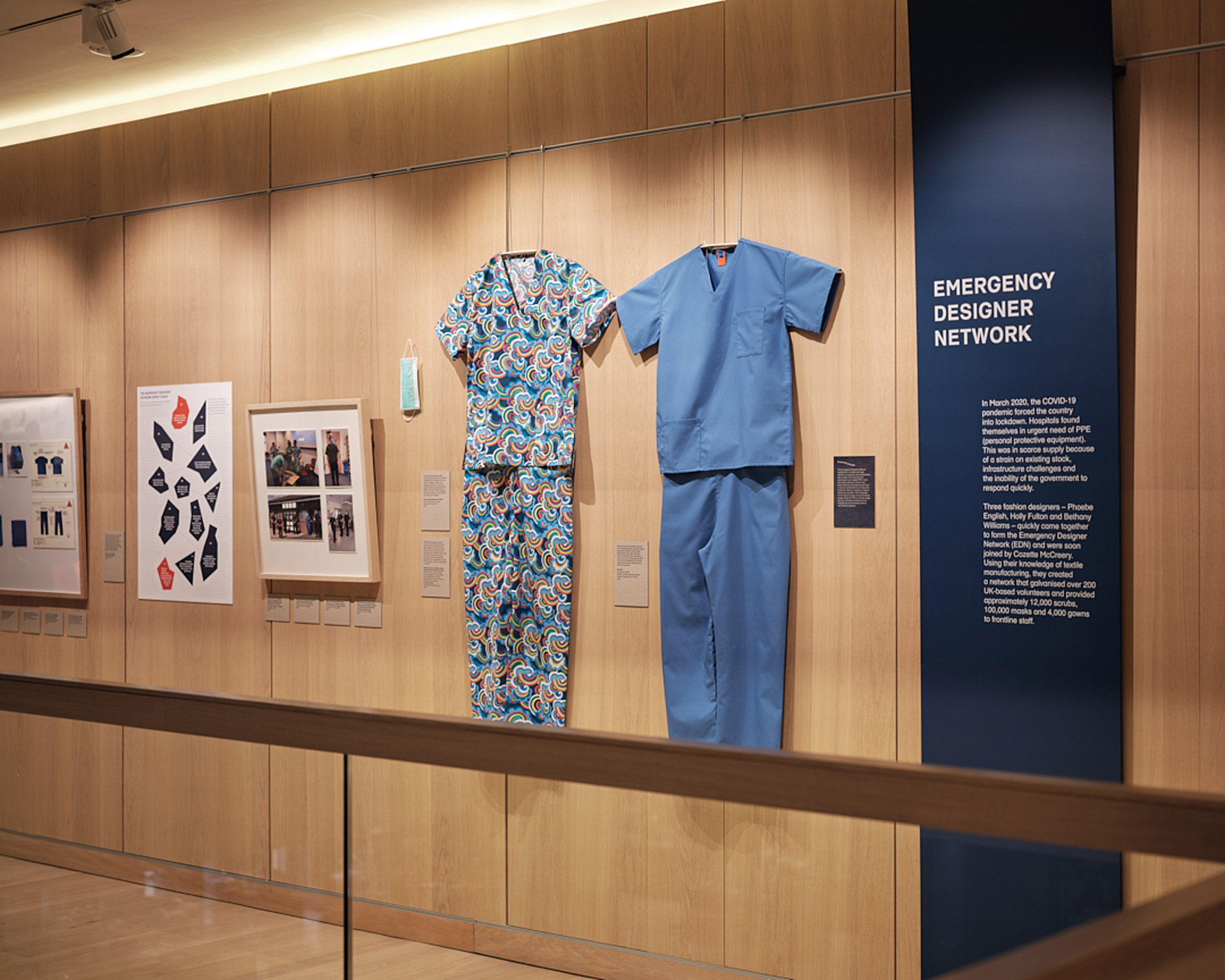 Garments are exhibited alongside research, drawings and materials
Garments are exhibited alongside research, drawings and materials
A section of the display exhibits Willliams' work as part of the Emergency Designer Network. The initiative is a collaboration between herself and designers Phoebe English, Cozette McCreery and Holly Fulton.
The group of creatives, with their textile manufacturing knowledge and teams of volunteers, produced 12,000 scrubs, 100,000 masks and 4,000 gowns for frontline healthcare workers during the peak of the coronavirus pandemic.
[ 
Read:
Waste crisis a "design-made mess" says Design Museum show curator
](https://www.dezeen.com/2021/10/23/waste-age-design-museum-exhibition/)
Waste from packaging tape sourced from Rimini, Italy was handwoven and constructed into functional items and garments as part of Williams's Autumn Winter 2018 collection, which was on display.
"I felt it was very important to show not just the finished garments, which you would see in a retail fashion context; being a museum display I wanted to add other layers of information," explained Khanchandani.
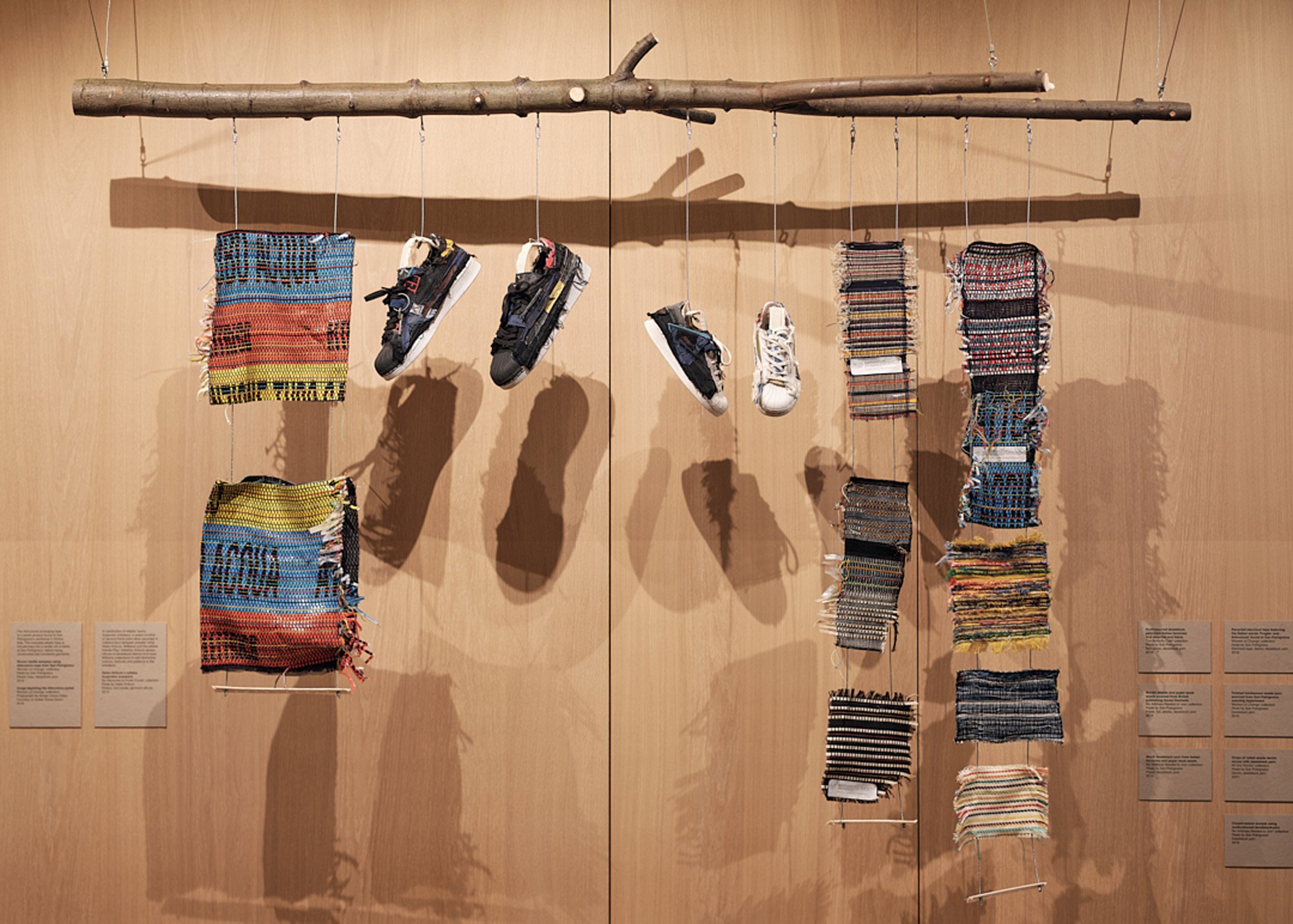 Williams' work merges streetwear and craft
Williams' work merges streetwear and craft
"There are process materials like drawings and sketches, and also source material," said Khanchandani. "For instance, a jacket made of waste newspaper is shown alongside some of the waste material, the Liverpool Echo, which is dangling next to the garment."
"You're able to see the journey of the objects from inception, to finished product."
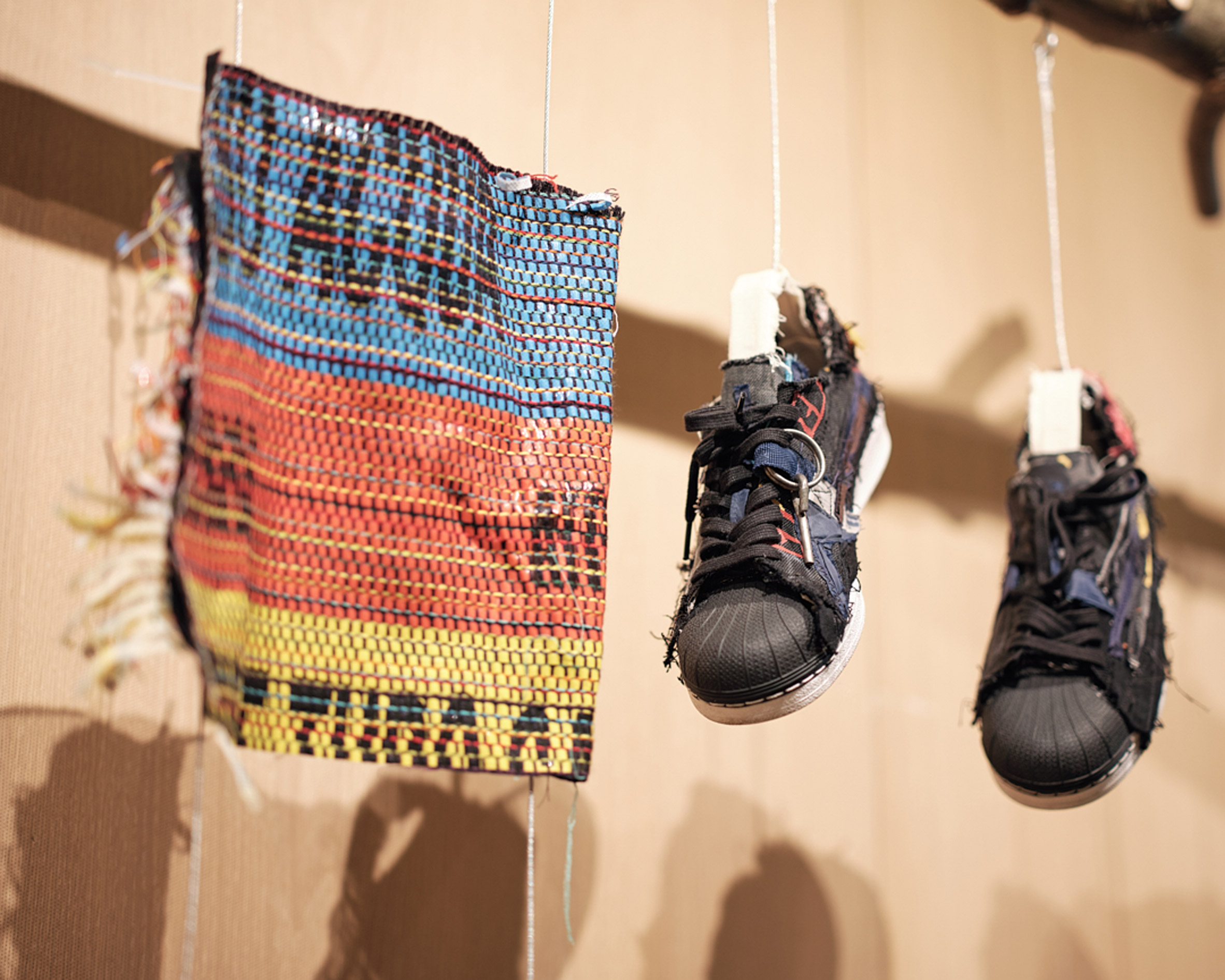 Williams has collaborated with San Patrignano, a drug and alcohol rehabilitation programme
Williams has collaborated with San Patrignano, a drug and alcohol rehabilitation programme
Each season, the fashion studio collaborates with different local charities and grassroots programs and donates a percentage of its profits to its causes.
"With our work, we hope to continue to reach new audiences, encourage inclusivity and positive change for the fashion industry," said Williams. "The Design Museum continues to be aligned with this via the exhibitions curated, including their Waste Age exhibition, which we featured in last year."
"We are so proud to showcase our new exhibition: Bethany Williams: Alternative Systems, a celebration of the new way of working proposed for the fashion industry by the studio's work."
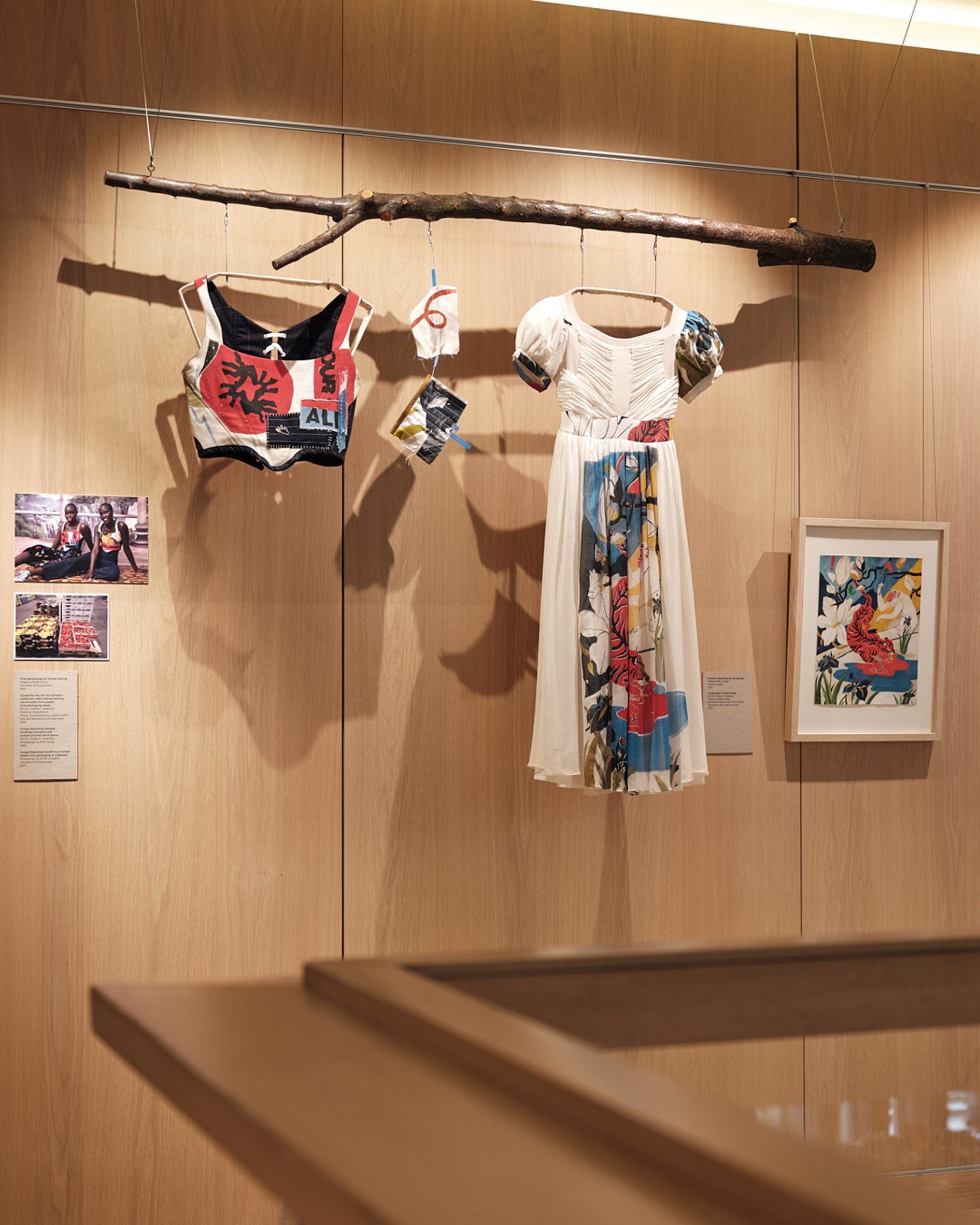 Dresses and corsetry feature boning constructed from waste materials
Dresses and corsetry feature boning constructed from waste materials
The opening of Bethany Williams: Alternative Systems was timed to coincide with Williams' Autumn Winter 2022 collection, titled The Hands that Heal Us, which was presented at the museum.
The collection included a cactus leather jacket, and garments made from recycled and organic-based denim with detachable metal hardware that aid the recycling process at the end of its life.
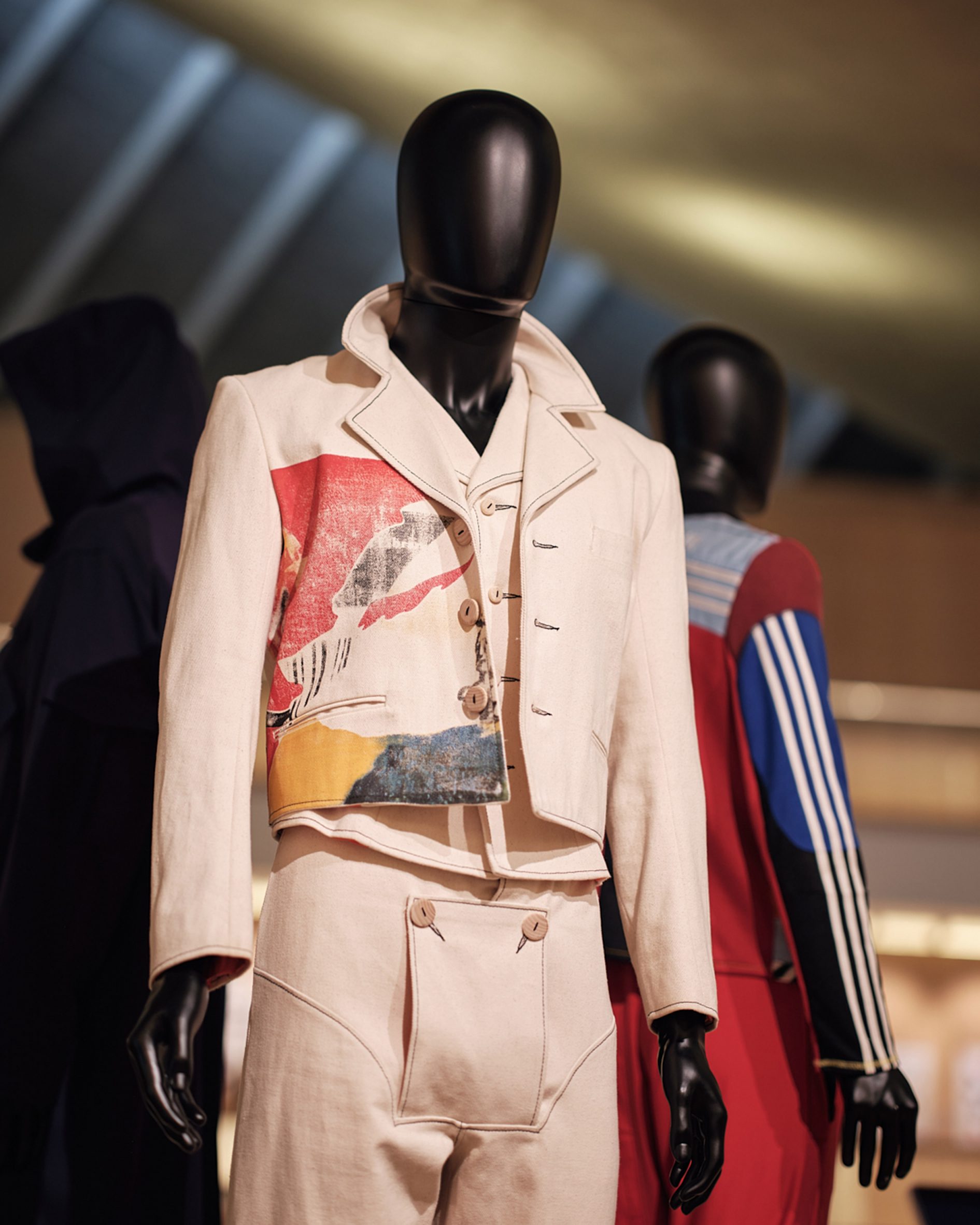 A skeleton suit was informed by a 19th-century children's playsuit
A skeleton suit was informed by a 19th-century children's playsuit
In 2016, Williams graduated from London College of Fashion and showed her MA graduate collection in the university's show as part of London Fashion Week.
Last year's Waste Age exhibition at the Design Museum, which featured Williams' work, explored how design has contributed to the increasing throwaway culture and how people can create an alternative circular economy that doesn't exploit the planet.
Photography is byFelix Speller.
Bethany Williams: Alternative Systems is on display at the Design Museum from 22 February 2022. See Dezeen Events Guide for all the latest architecture and design events taking place around the world.
The post Bethany Williams: Alternative Systems opens at the Design Museum appeared first on Dezeen.
#all #exhibitions #design #fashion #installations #designmuseum #sustainabledesign #fashionexhibitions #sustainablefashion
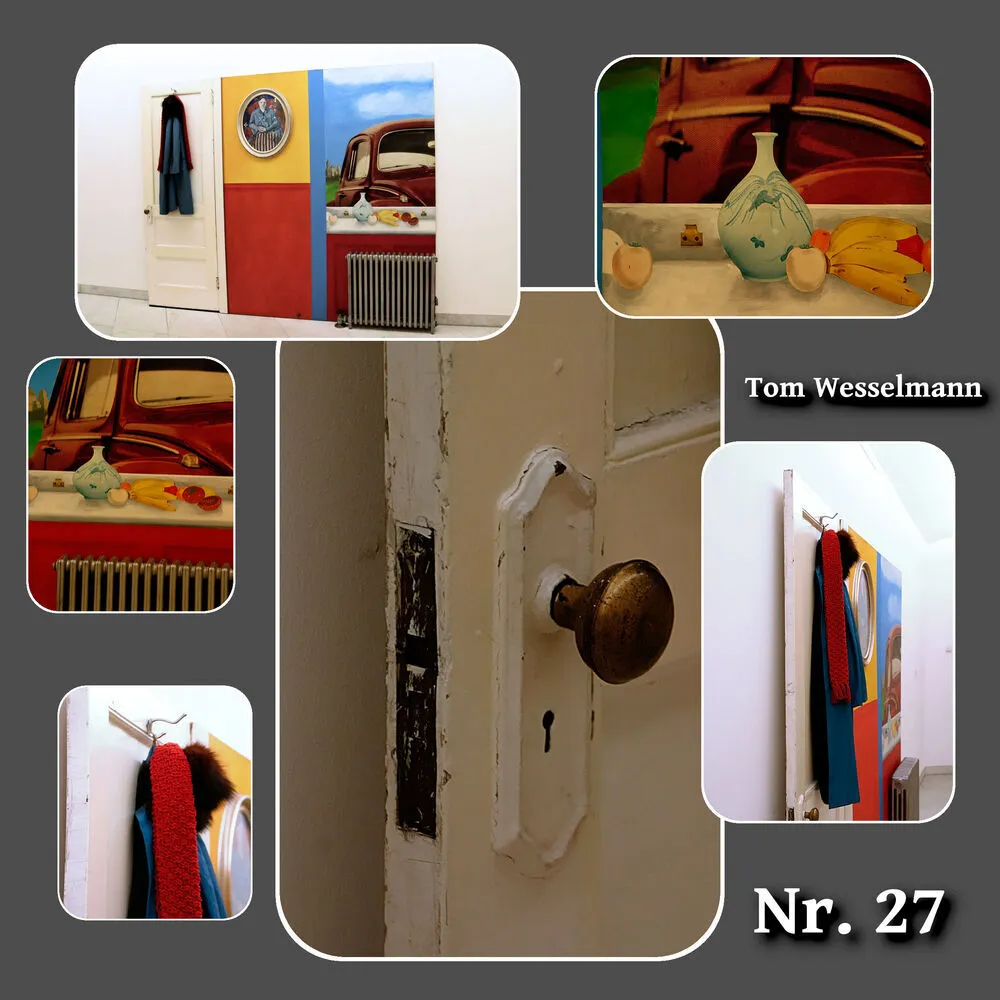


 Bethany Williams: Alternative Systems is a free display in the atrium of the Design Museum
Bethany Williams: Alternative Systems is a free display in the atrium of the Design Museum The display was chosen to be shown in a free entry space in the museum
The display was chosen to be shown in a free entry space in the museum The exhibition design was completed by Edit
The exhibition design was completed by Edit Garments are exhibited alongside research, drawings and materials
Garments are exhibited alongside research, drawings and materials
 Williams' work merges streetwear and craft
Williams' work merges streetwear and craft Williams has collaborated with San Patrignano, a drug and alcohol rehabilitation programme
Williams has collaborated with San Patrignano, a drug and alcohol rehabilitation programme Dresses and corsetry feature boning constructed from waste materials
Dresses and corsetry feature boning constructed from waste materials A skeleton suit was informed by a 19th-century children's playsuit
A skeleton suit was informed by a 19th-century children's playsuit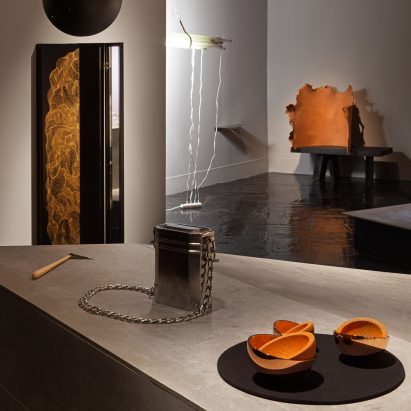
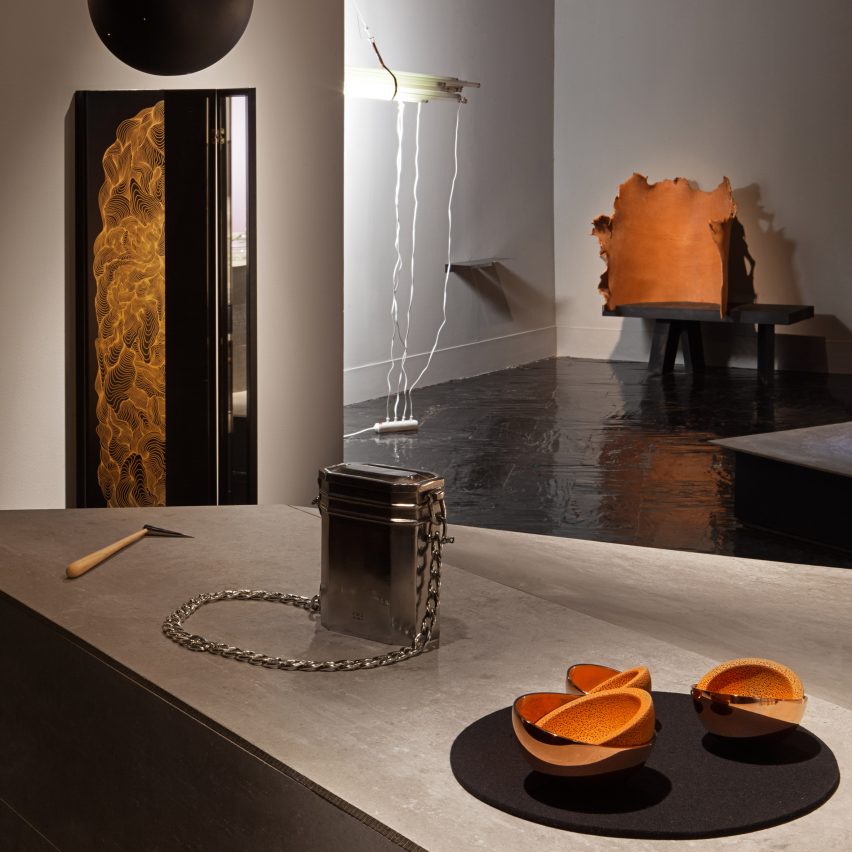
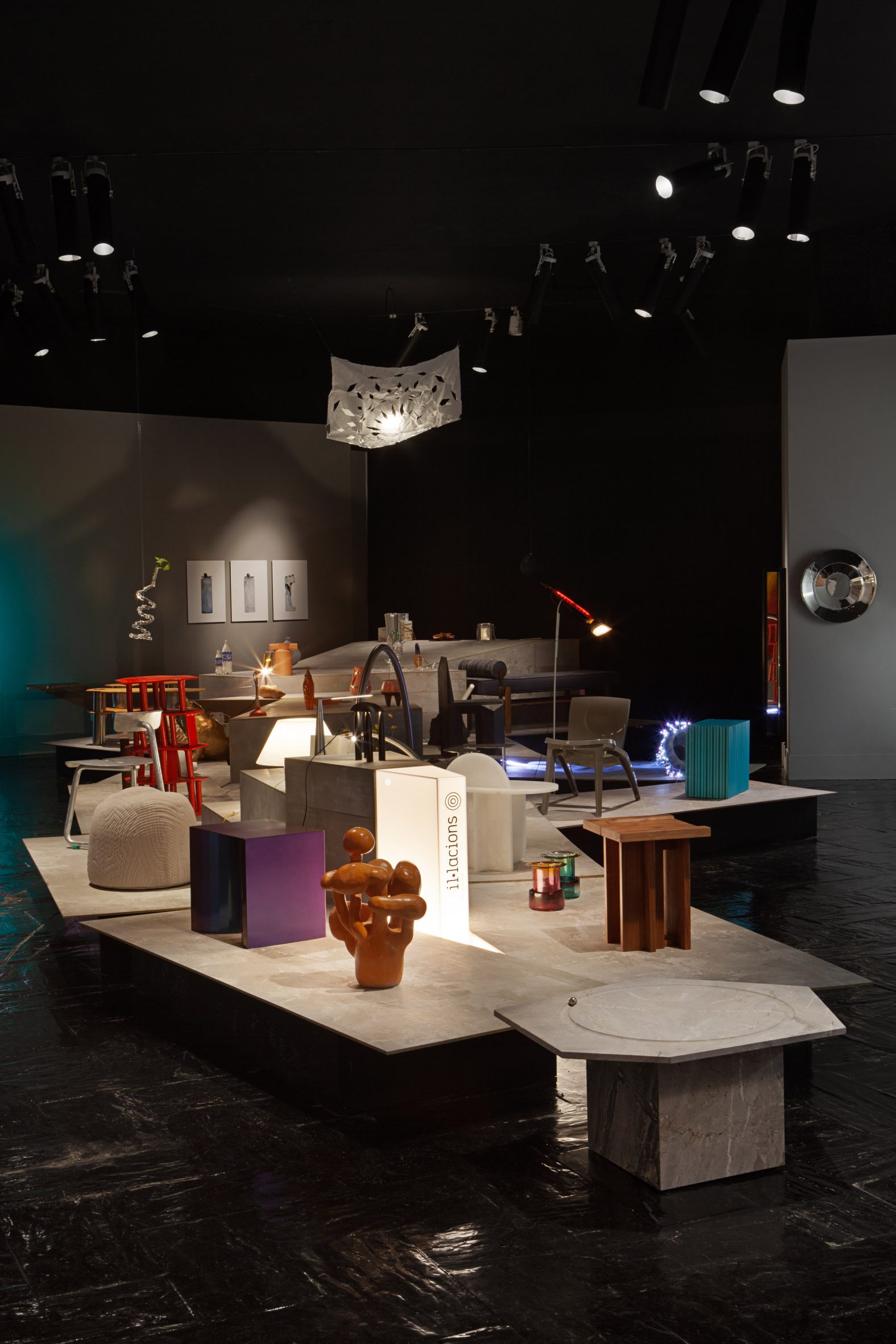 Inferences/Inferencias is a group exhibition that was exhibited as part of Madrid Design Festival
Inferences/Inferencias is a group exhibition that was exhibited as part of Madrid Design Festival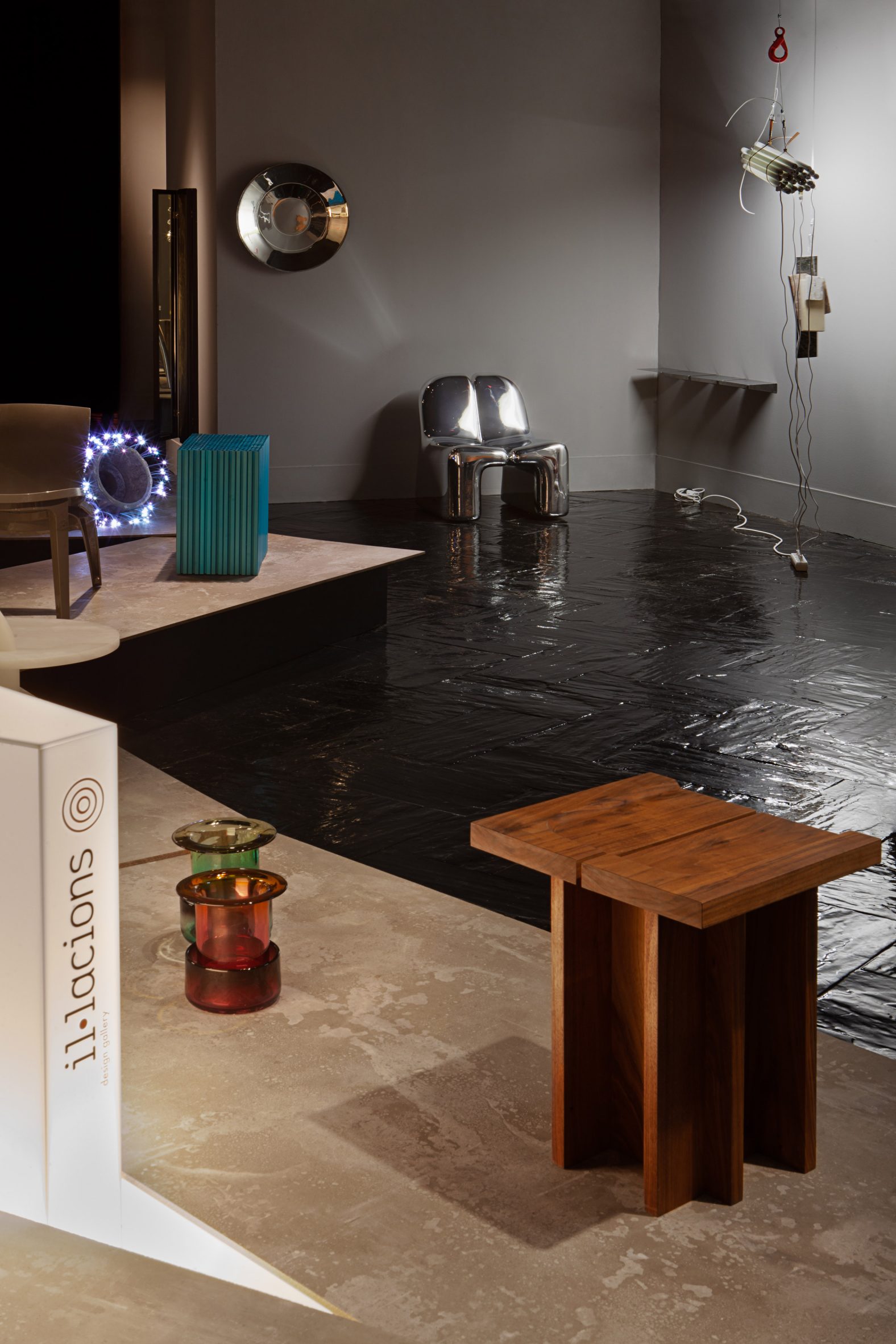 A wooden stool by Sanna Völker is a tribute to architect Louis Kahn
A wooden stool by Sanna Völker is a tribute to architect Louis Kahn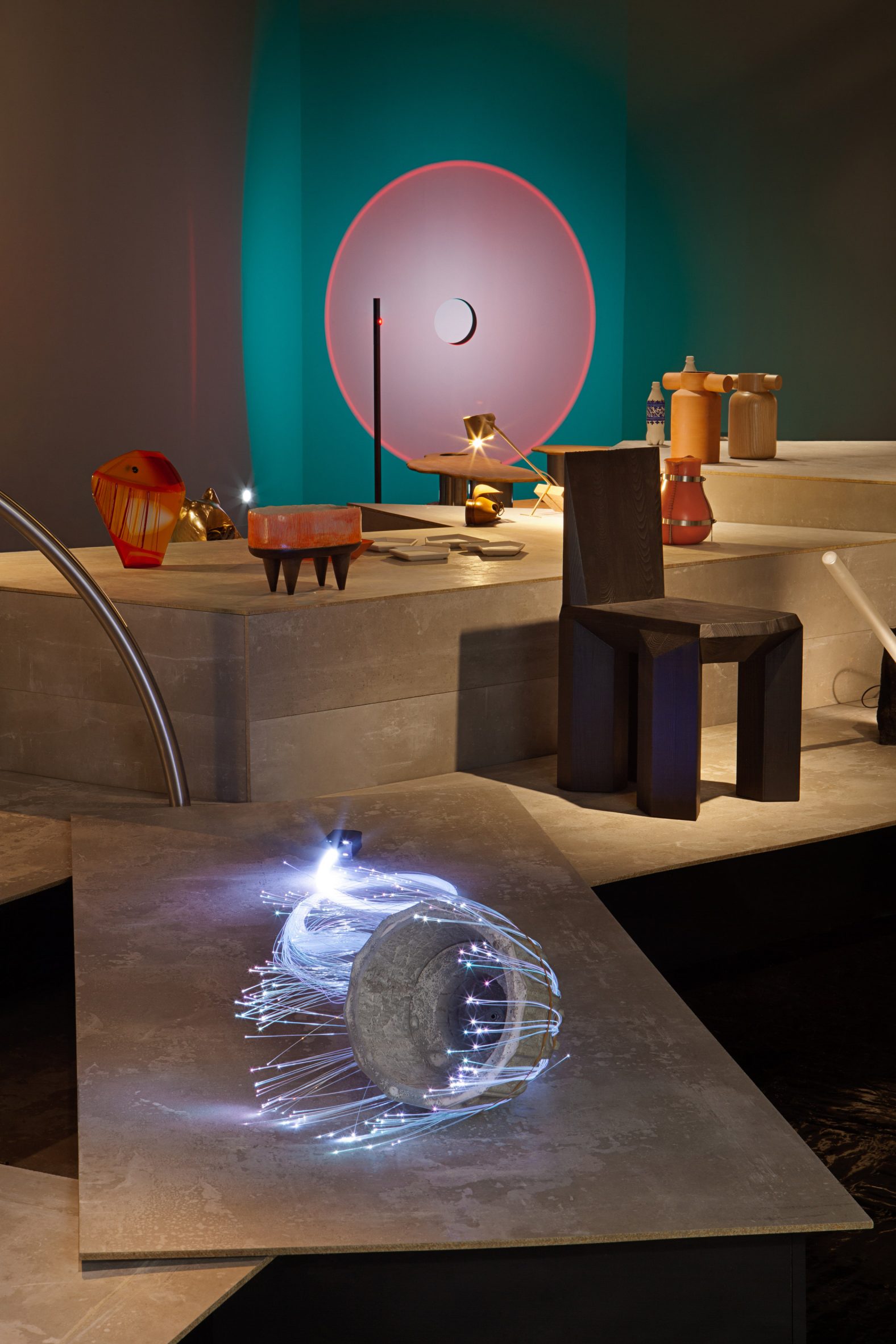 A light installation titled Ignoring Helena by Michael Roschach is placed nearby Burned Ode Chair by Sizar Alexis
A light installation titled Ignoring Helena by Michael Roschach is placed nearby Burned Ode Chair by Sizar Alexis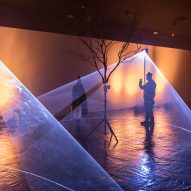
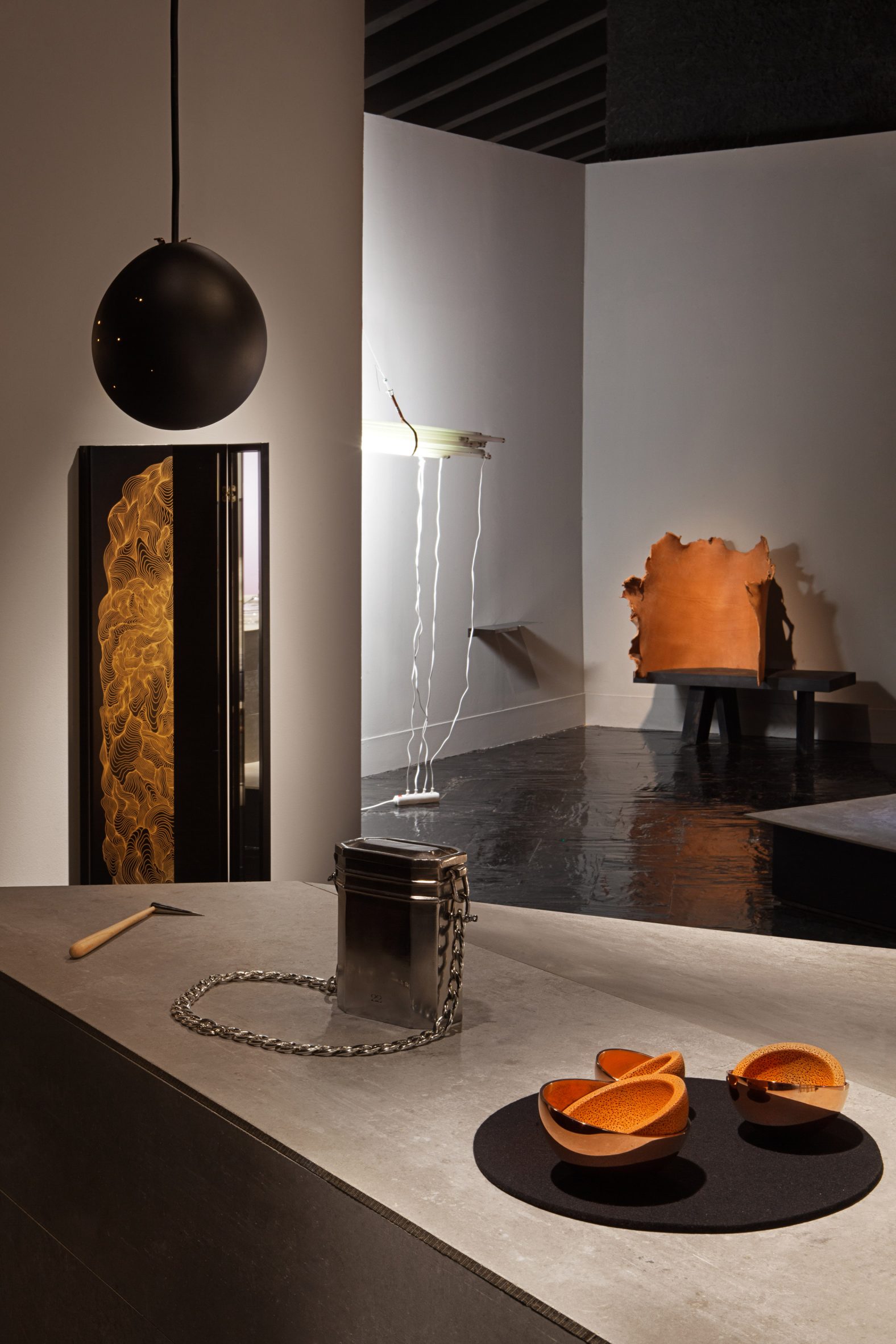 Objects, fixtures and furnishings were hung from walls and placed throughout the gallery space
Objects, fixtures and furnishings were hung from walls and placed throughout the gallery space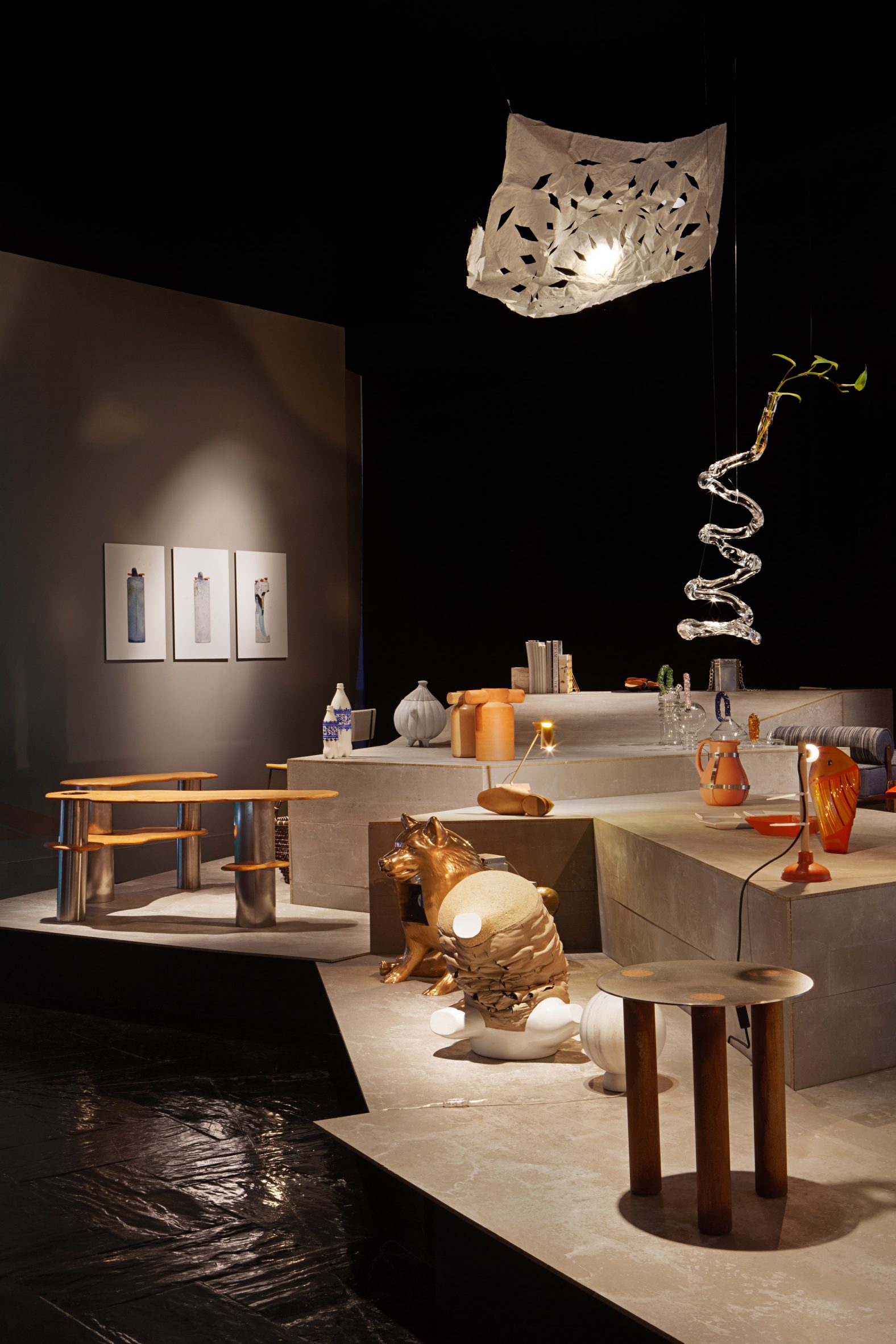 The exhibition features 74 objects, furnishings and sculptures that discuss contemporary design
The exhibition features 74 objects, furnishings and sculptures that discuss contemporary design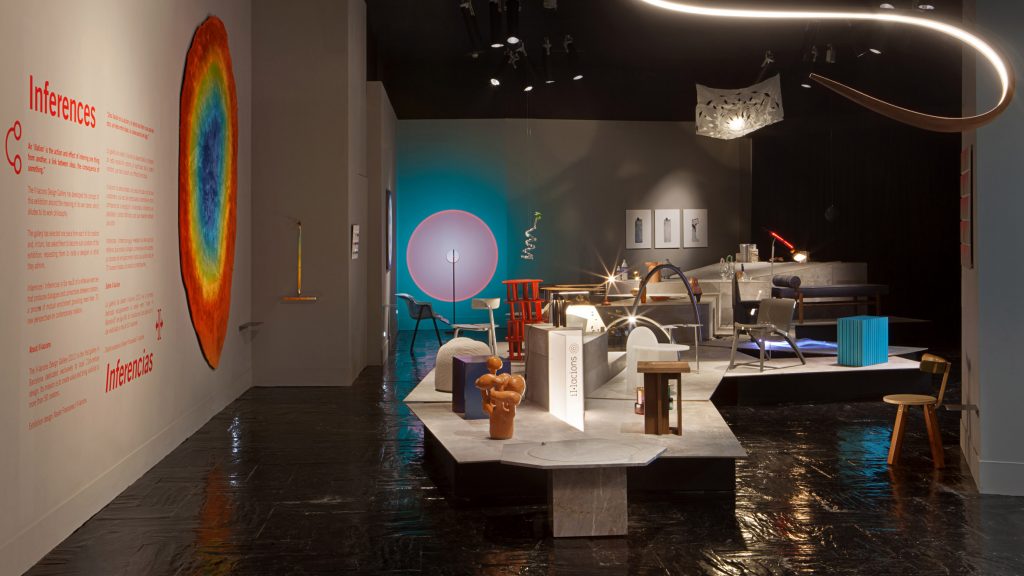
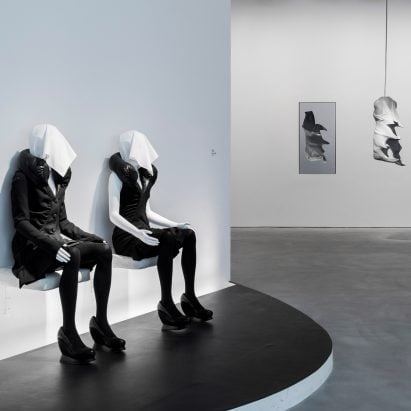
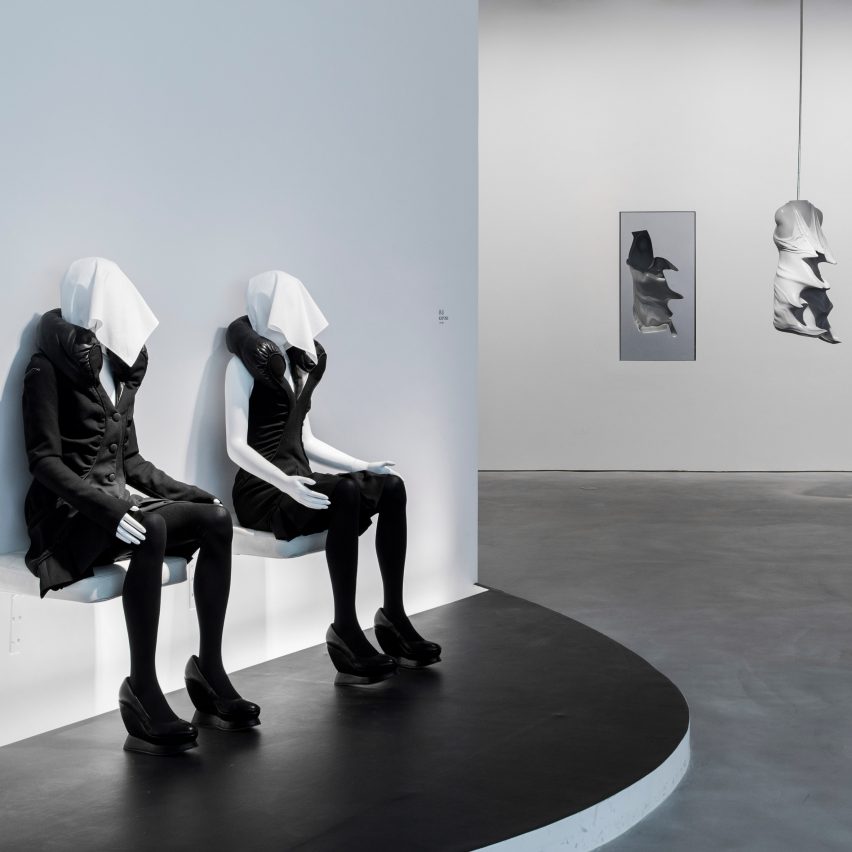
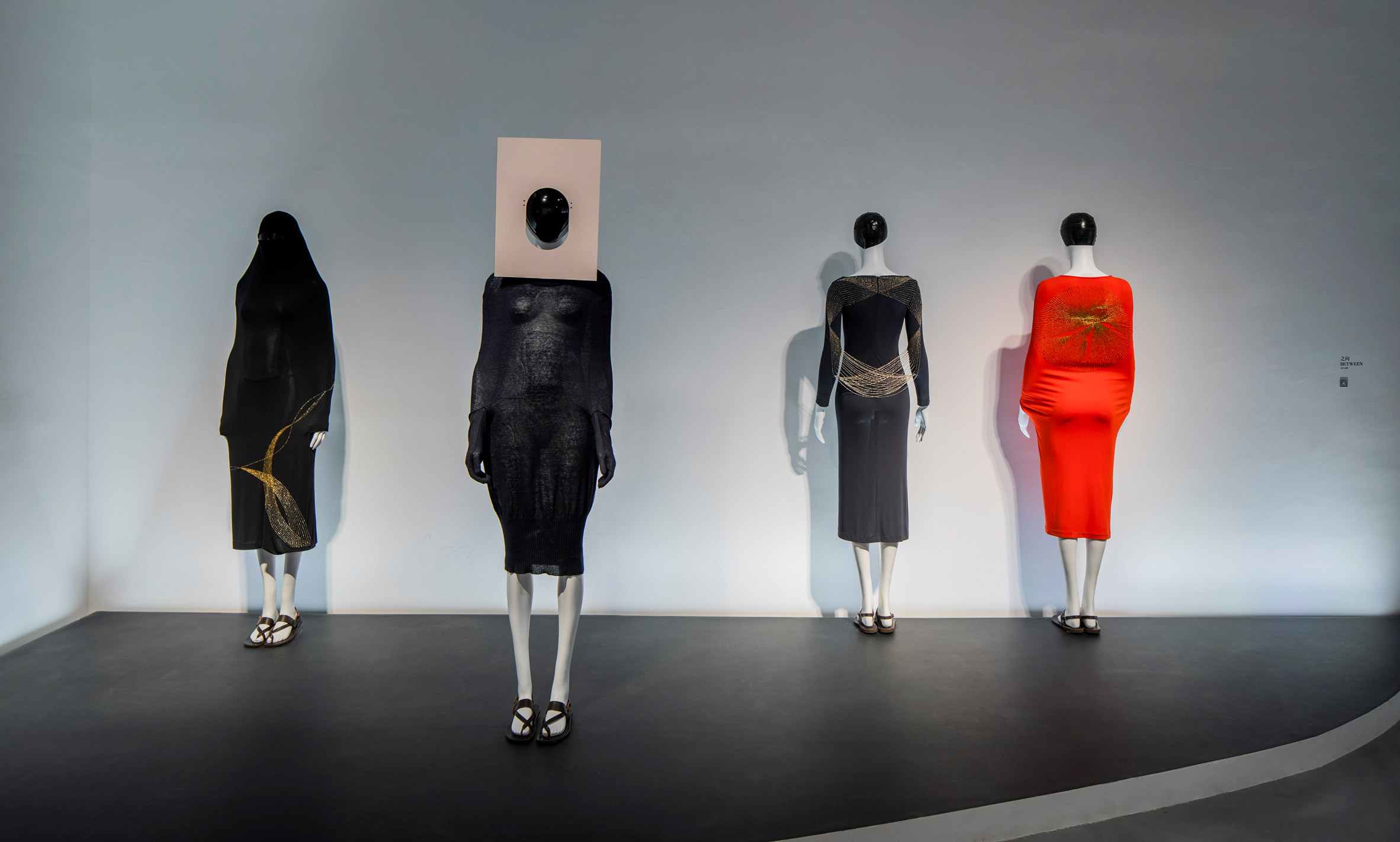 Hussein Chalayan: Archipelago wsa on show at Shanghai's Power Station of Design museum
Hussein Chalayan: Archipelago wsa on show at Shanghai's Power Station of Design museum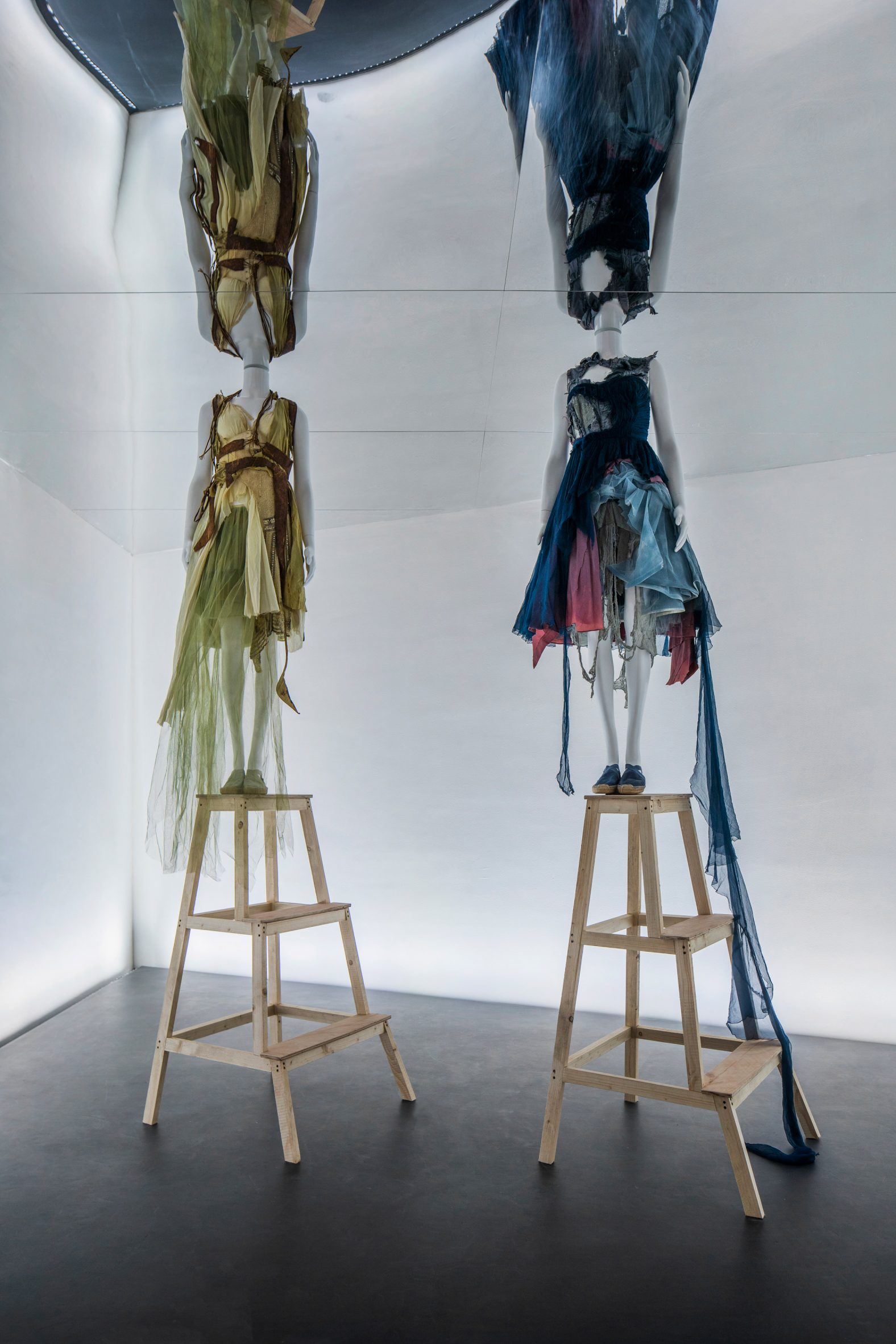 The exhibition contained 130 works by Hussein Chalayan
The exhibition contained 130 works by Hussein Chalayan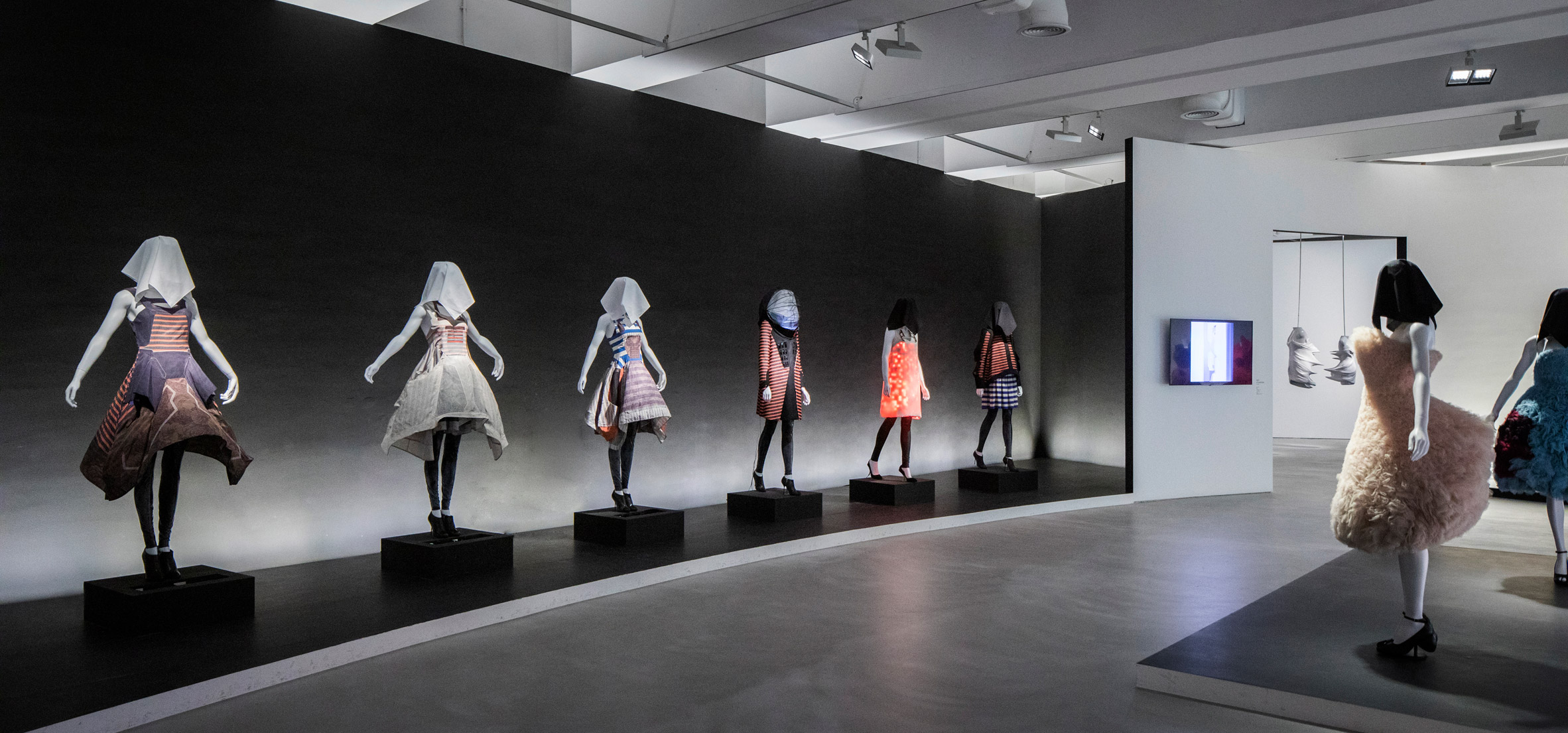 The exhibition is Power Station of Art's first fashion exhibit
The exhibition is Power Station of Art's first fashion exhibit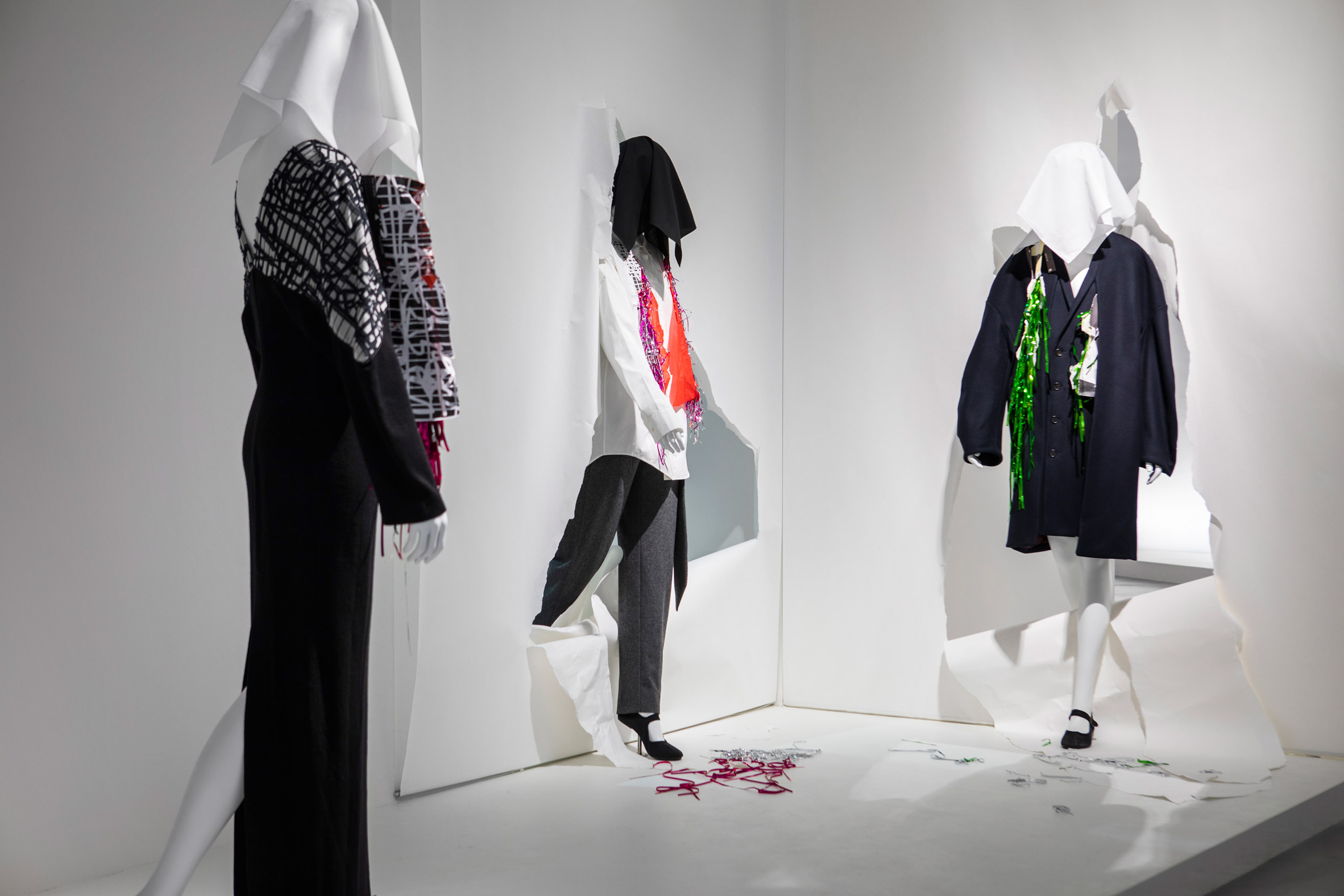 The exhibition highlights Chalayan's key works
The exhibition highlights Chalayan's key works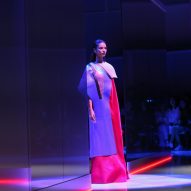
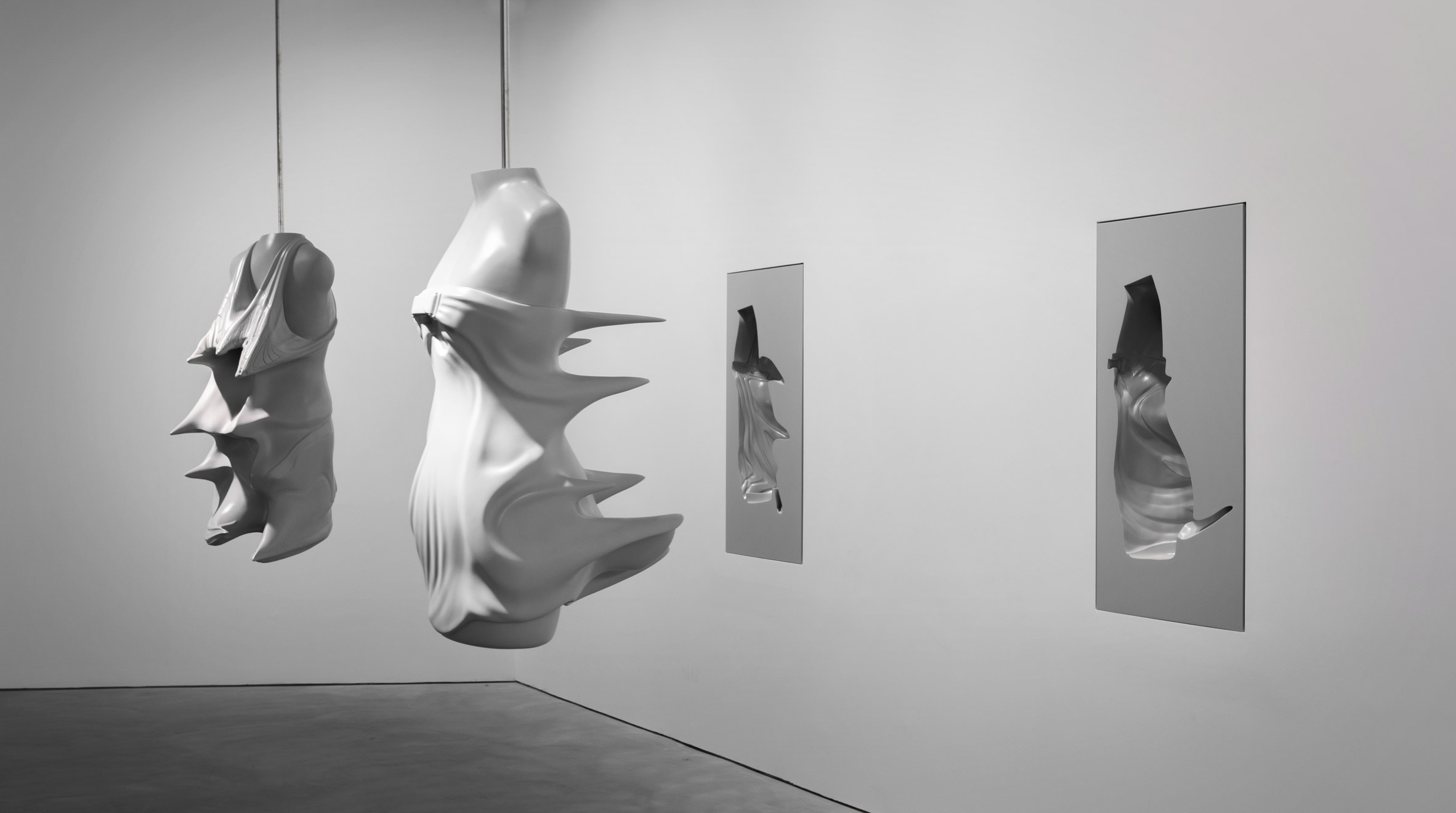 The exhibition was divided into nine different chapters
The exhibition was divided into nine different chapters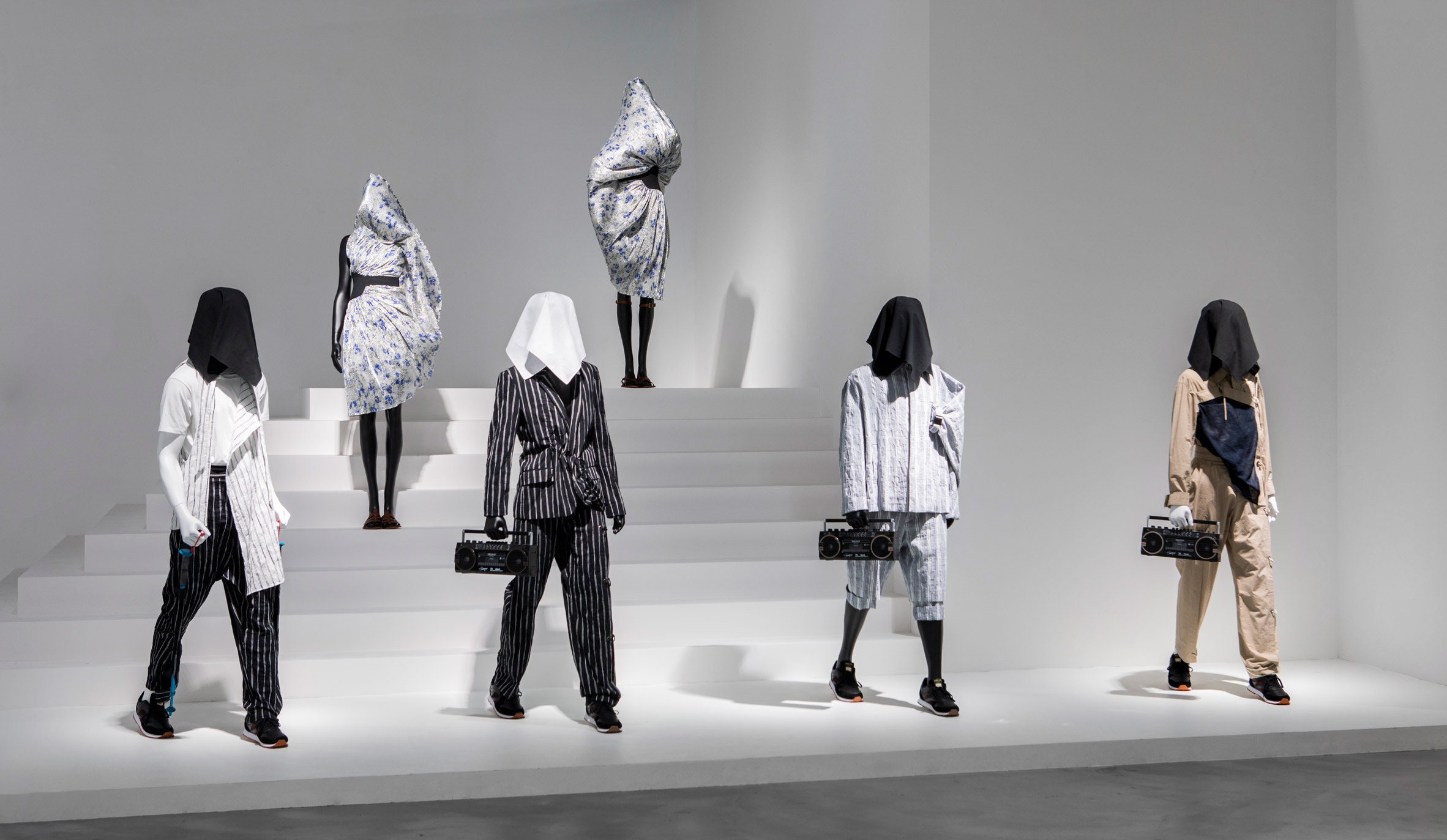 His work often features radical designs
His work often features radical designs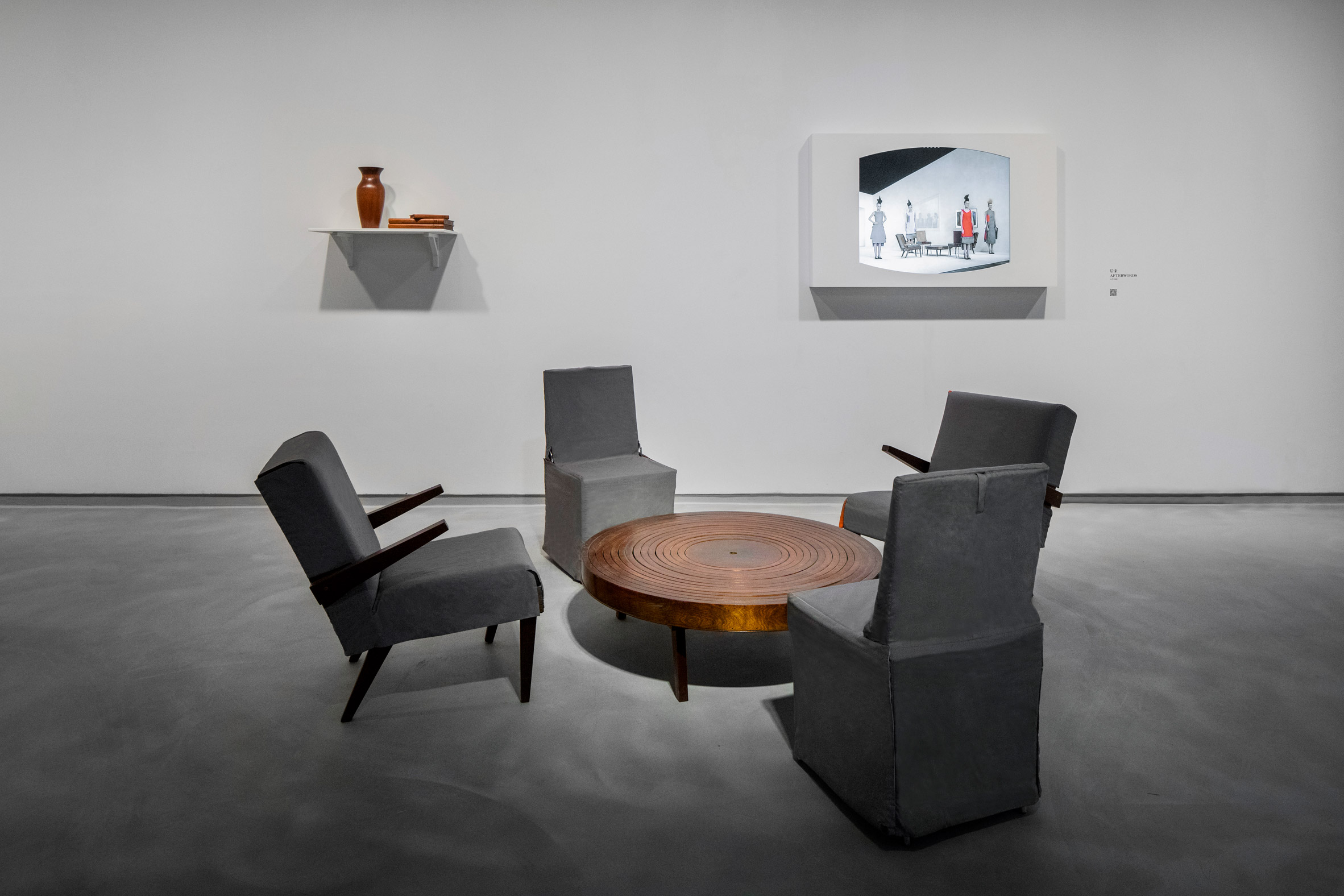 The exhibition is Chalayan's first Chinese exhibit
The exhibition is Chalayan's first Chinese exhibit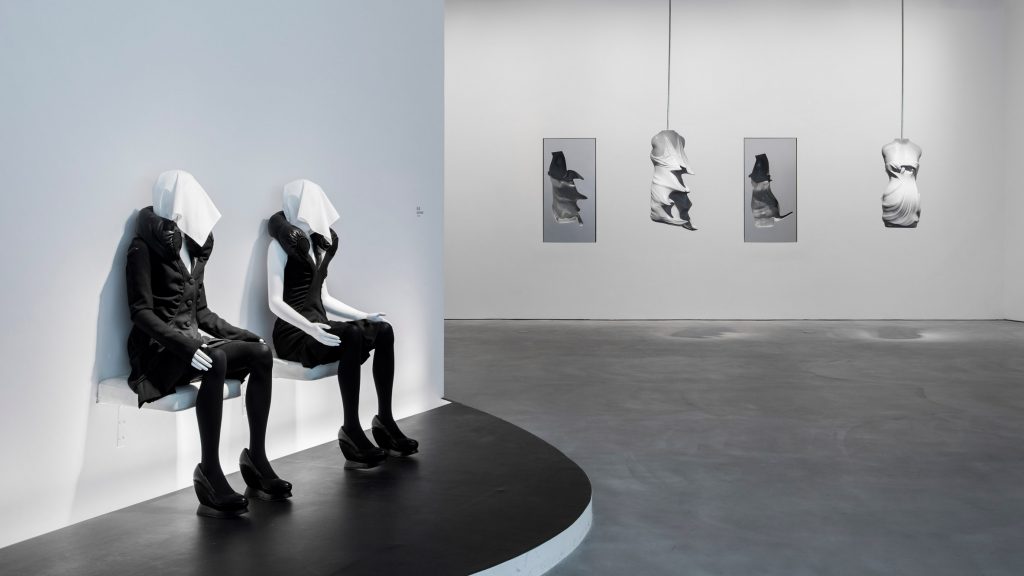
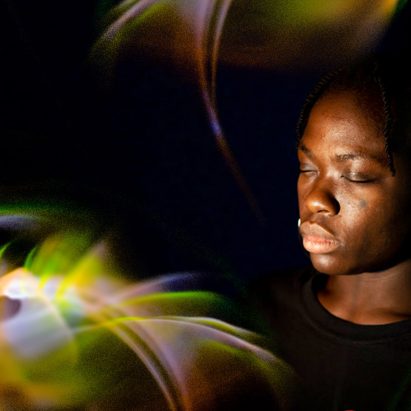
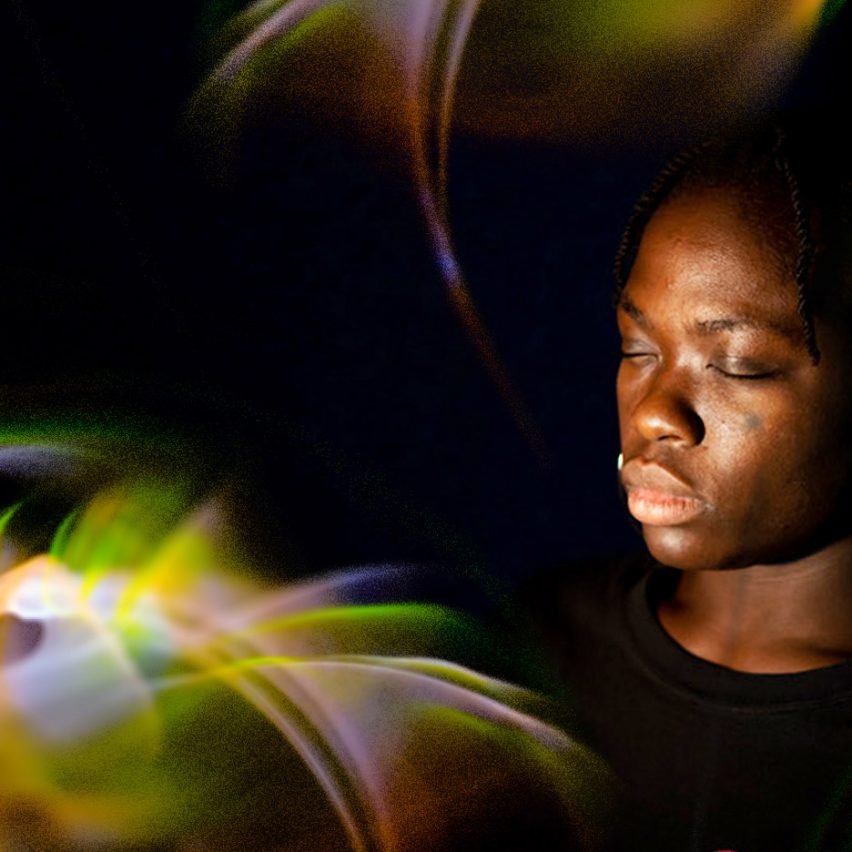
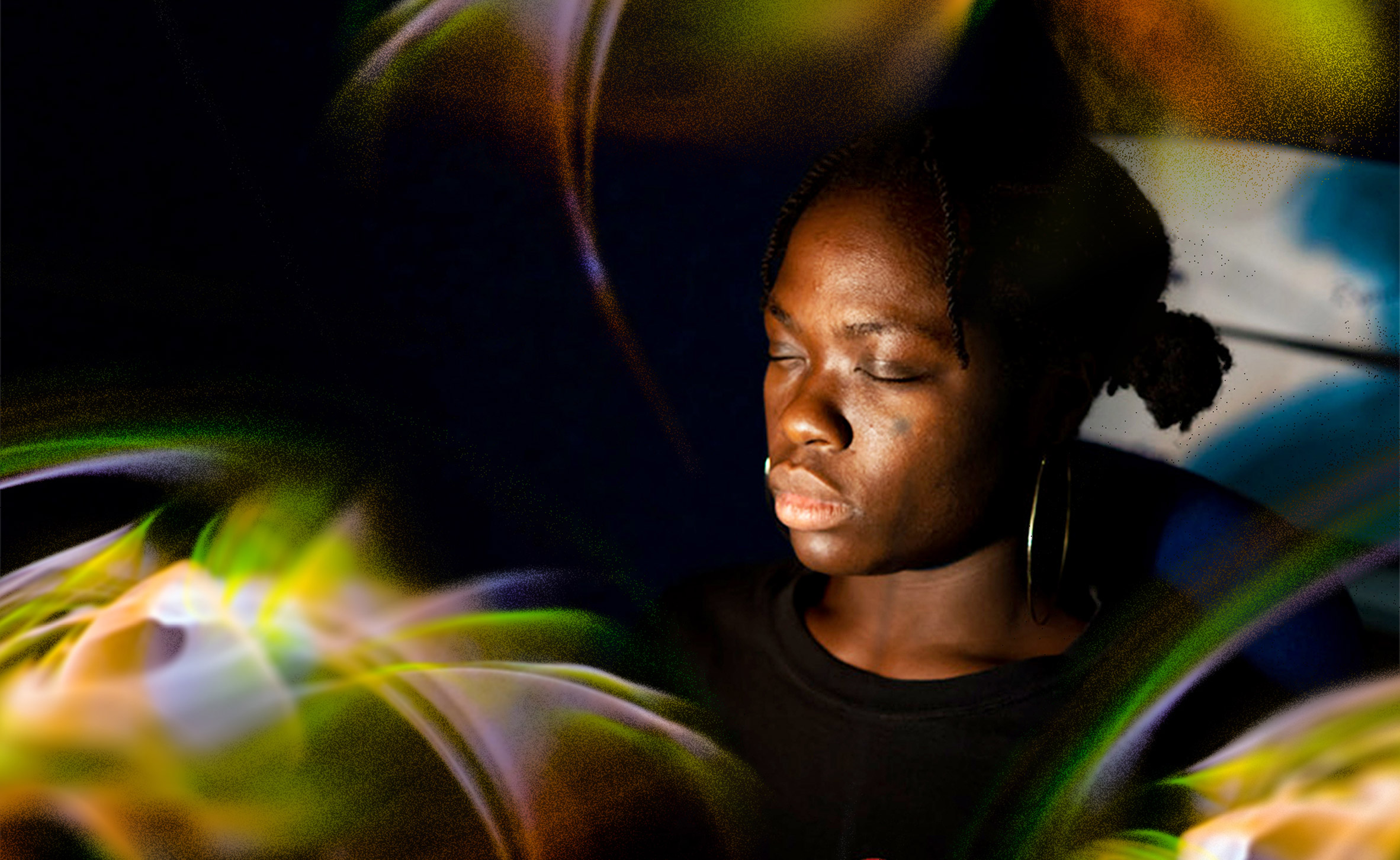 Dreamachine is an art installation that visitors experience while their eyes are shut
Dreamachine is an art installation that visitors experience while their eyes are shut
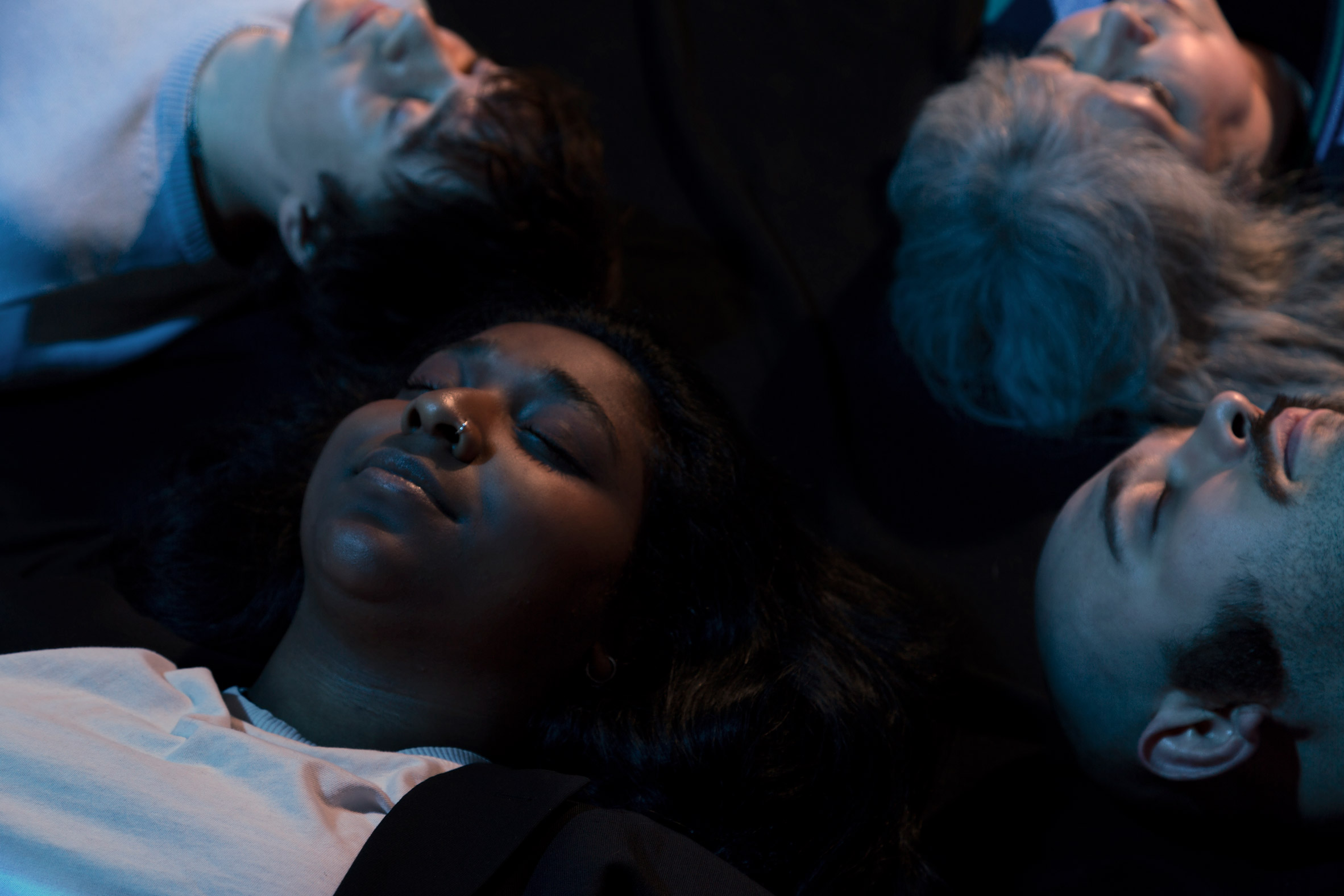 Flickering patterns of light behind their eyelids are meant to relax the mind
Flickering patterns of light behind their eyelids are meant to relax the mind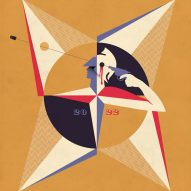
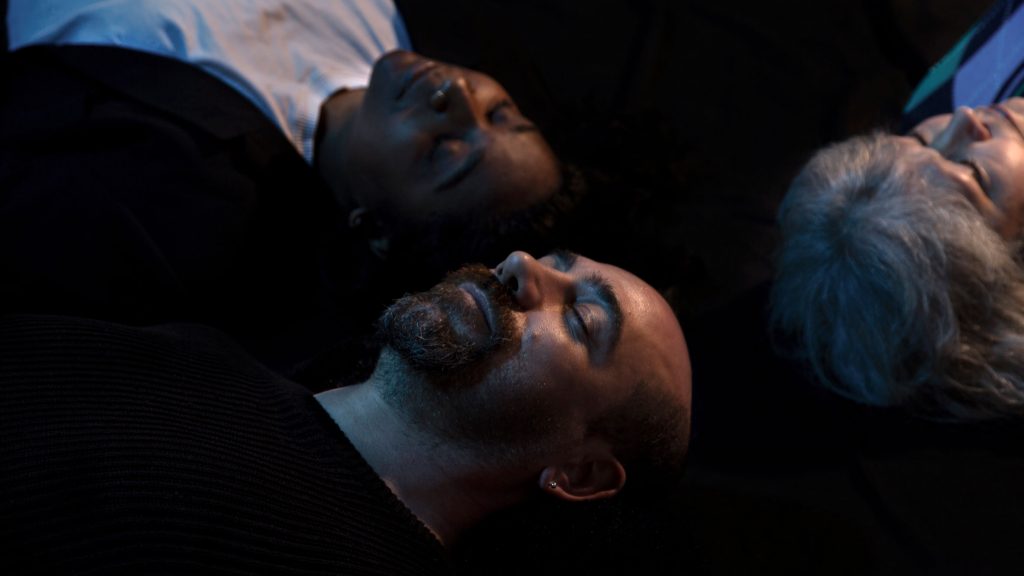
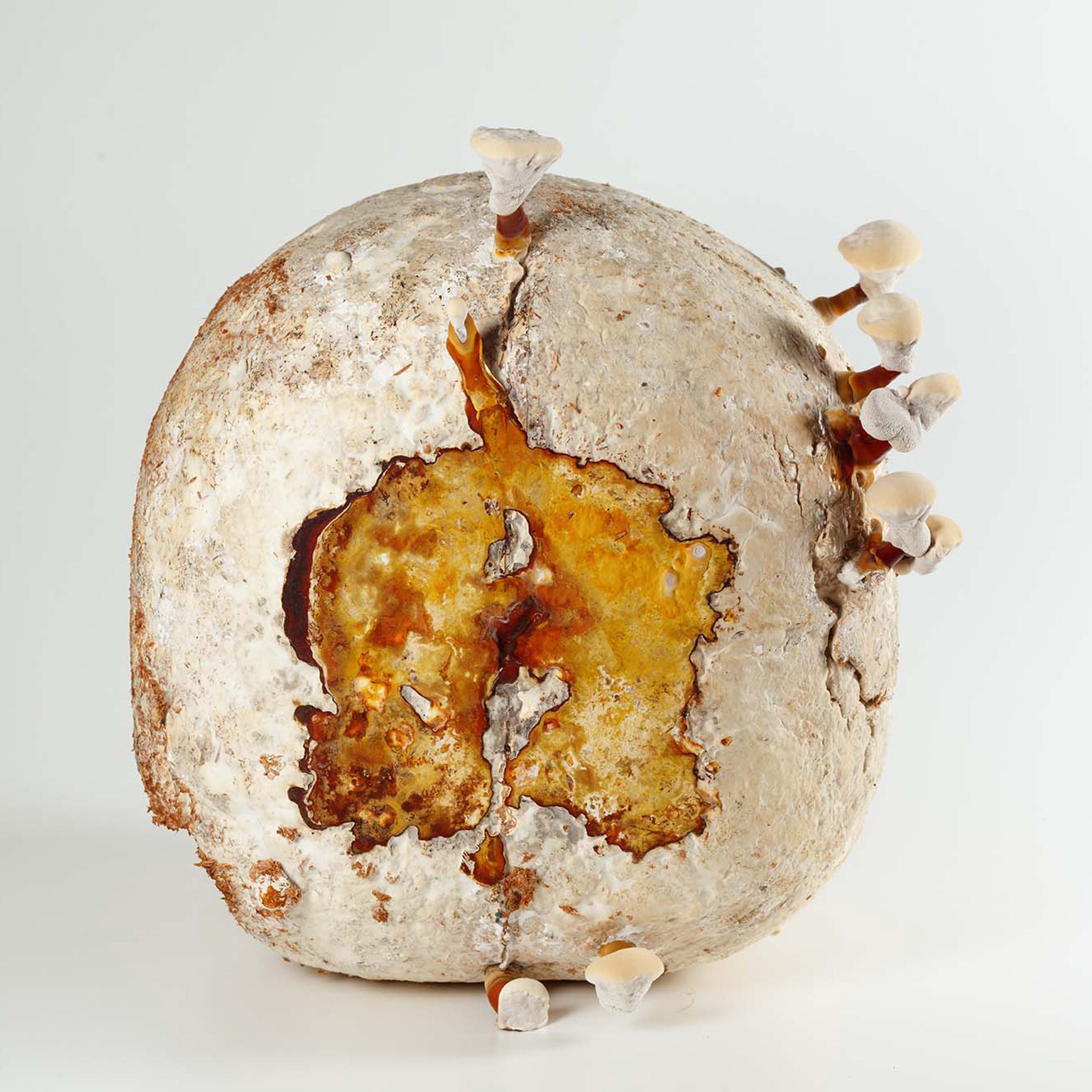

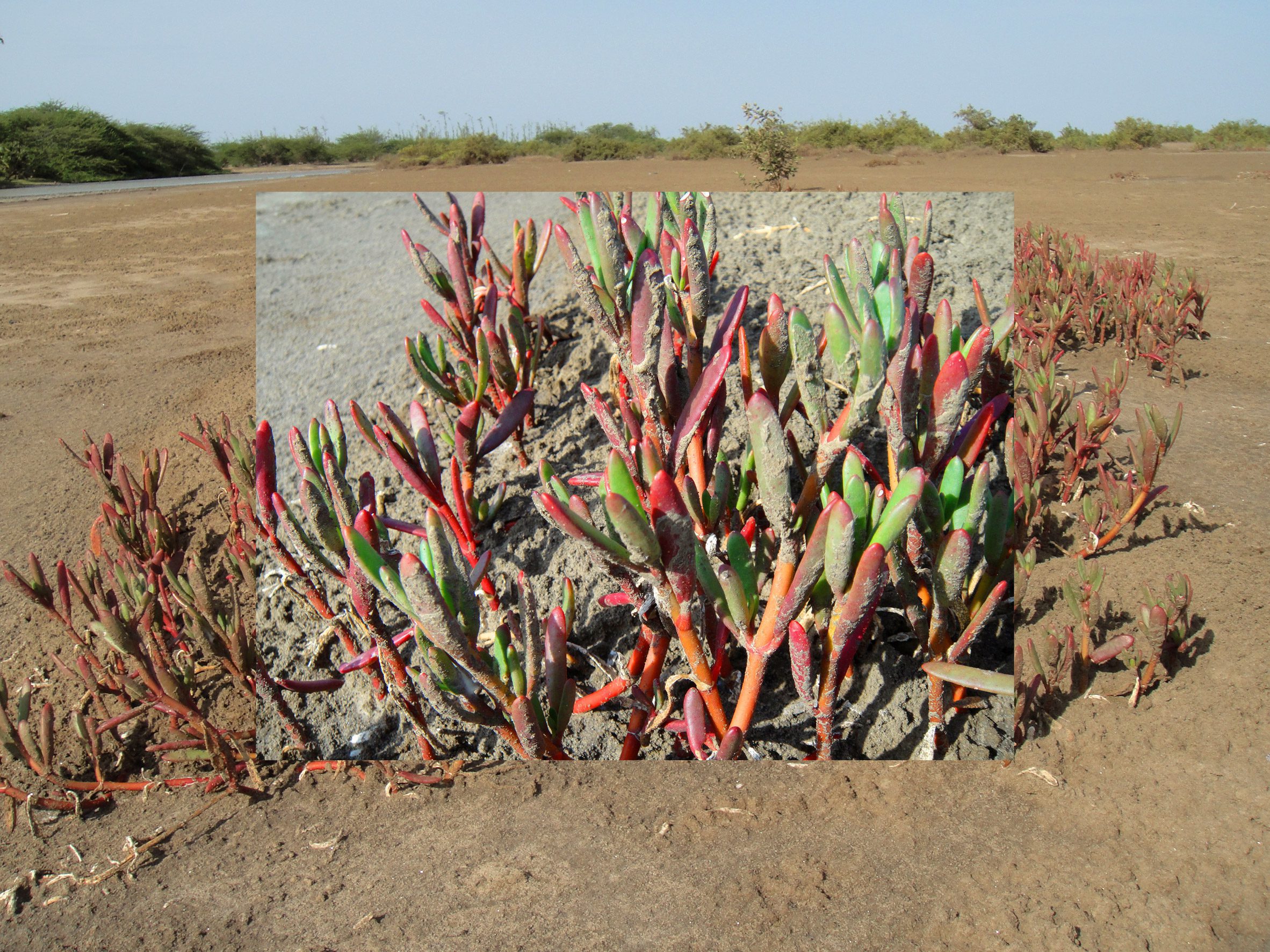 The exhibition includes projects by Indian artist Sonia Mehra Chawla (above) as well as Brazilian designer Clara Acioli (top image)
The exhibition includes projects by Indian artist Sonia Mehra Chawla (above) as well as Brazilian designer Clara Acioli (top image)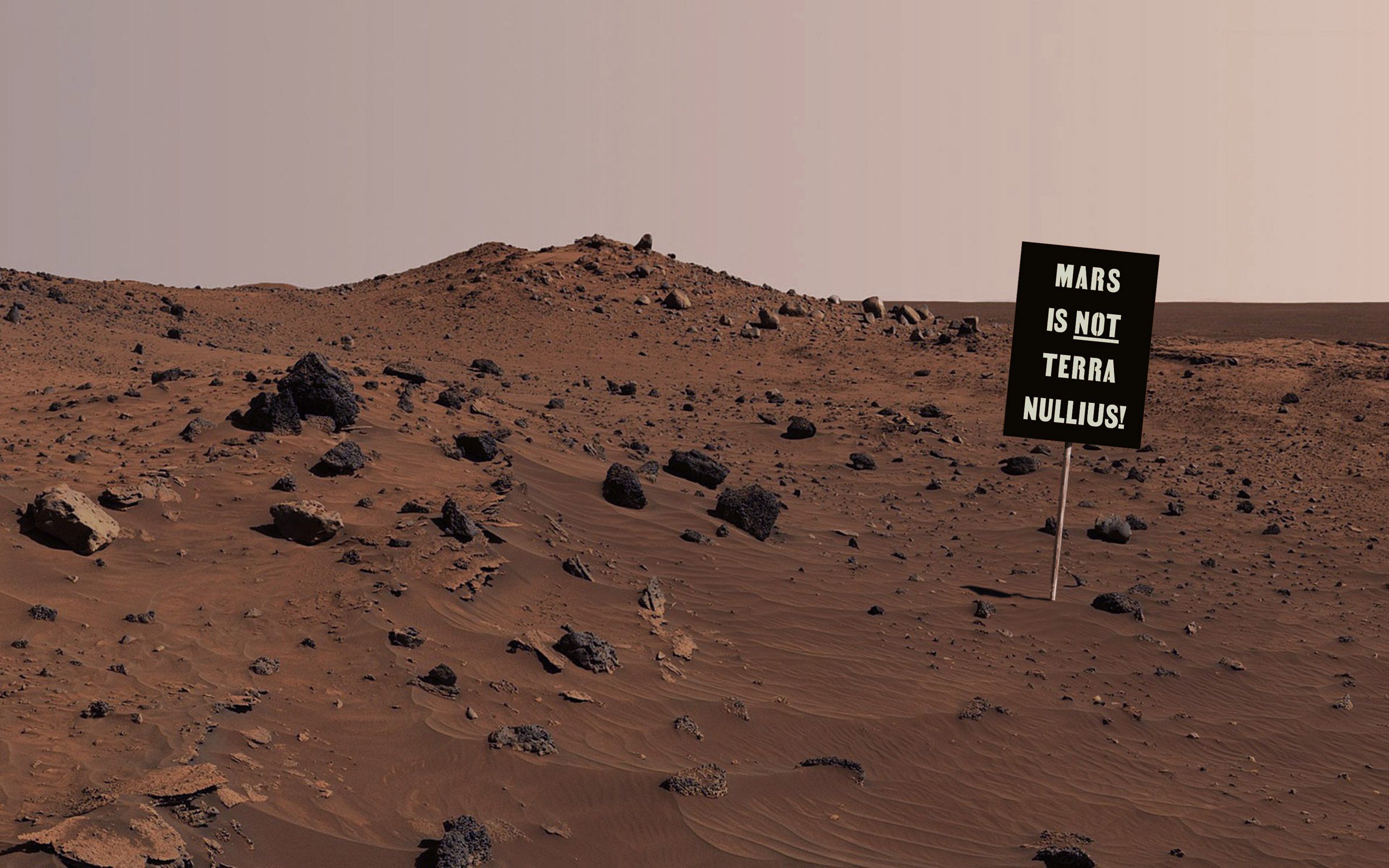 Nonhuman Nonsense has proposed a Universal Declaration of Martian Rights
Nonhuman Nonsense has proposed a Universal Declaration of Martian Rights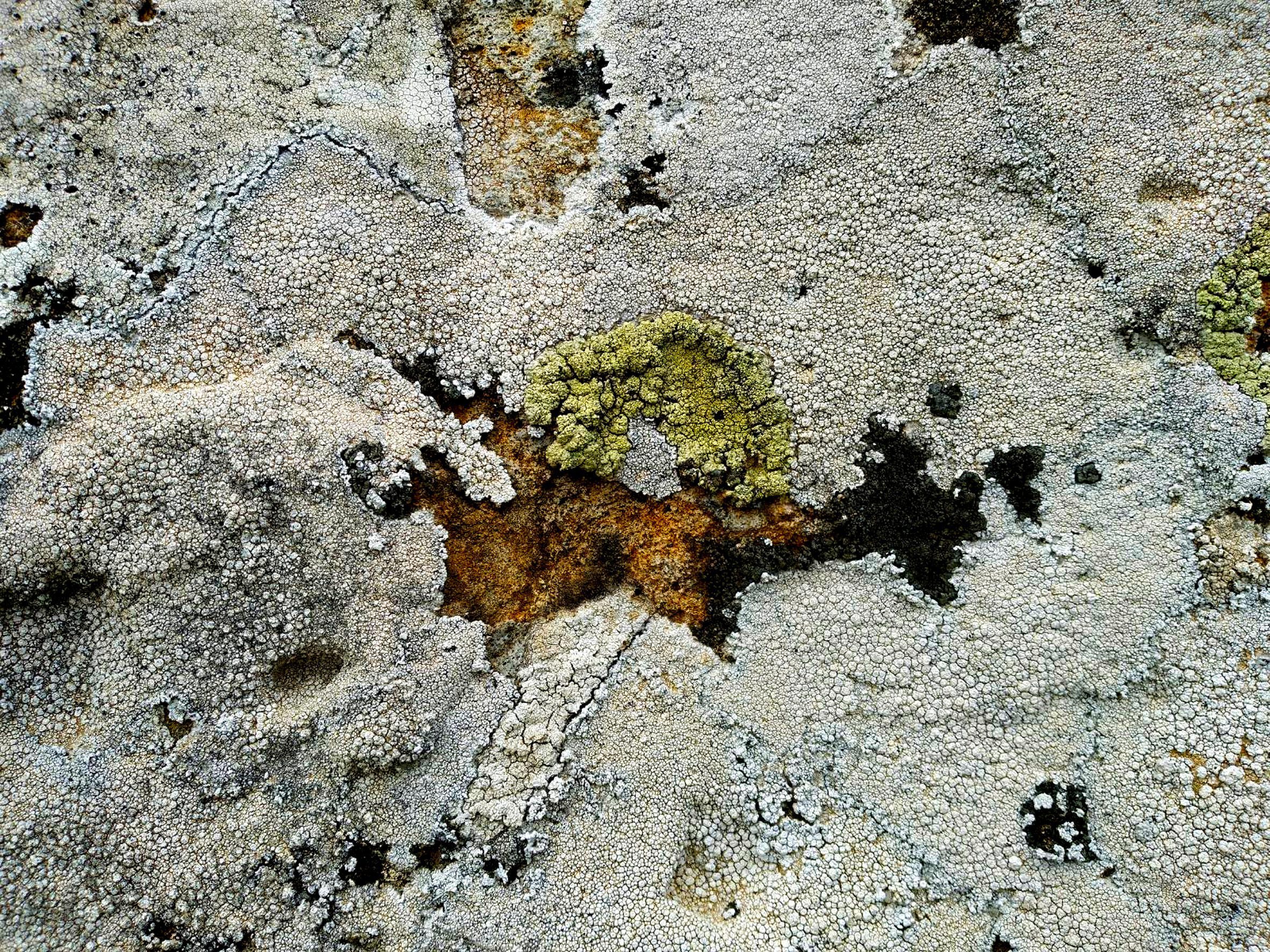 The Server Farm project by James Bridle proposes building a computer out of plants
The Server Farm project by James Bridle proposes building a computer out of plants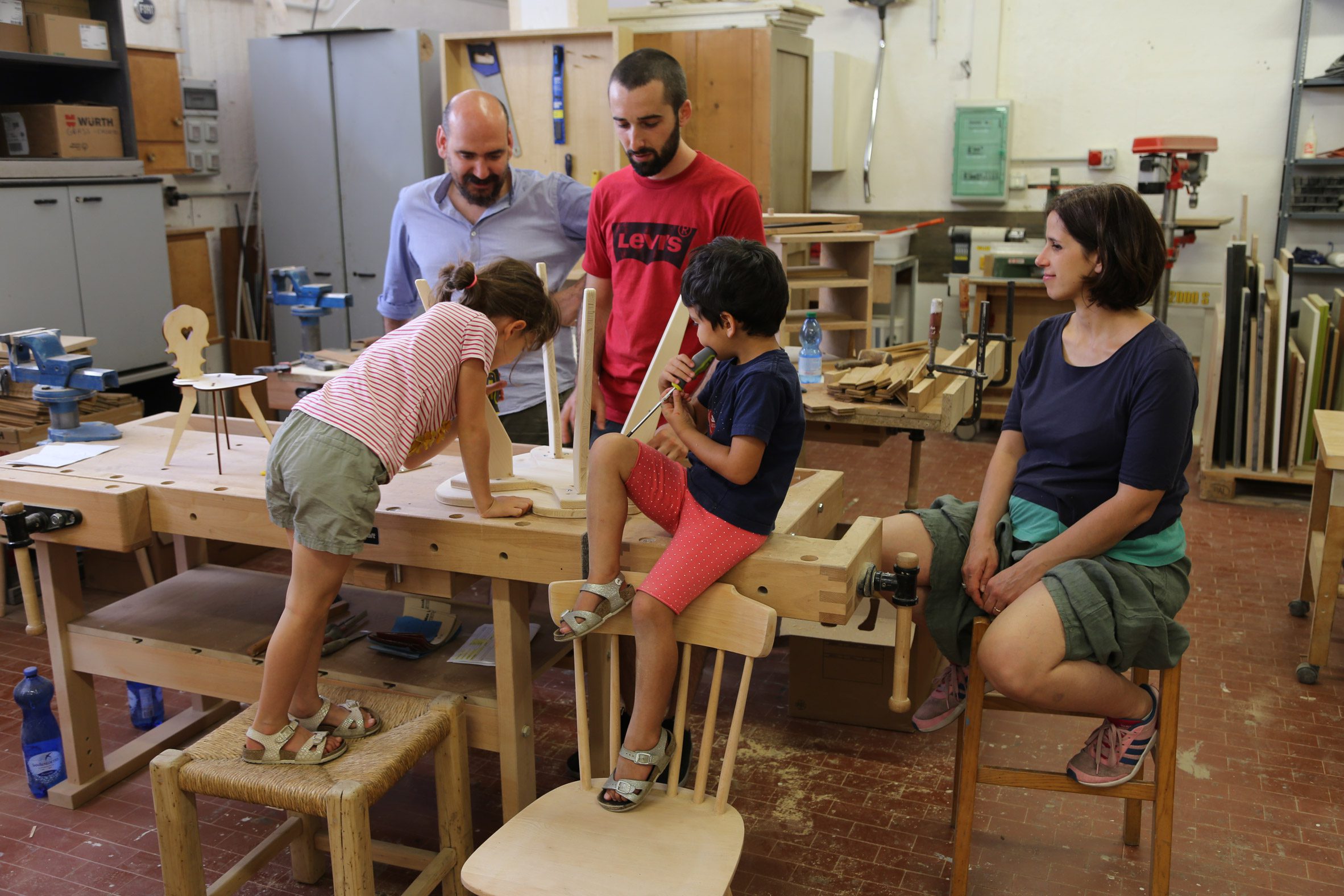 Andrea de Chirico's Superlocal project explores the local, small-scale production of everyday items
Andrea de Chirico's Superlocal project explores the local, small-scale production of everyday items